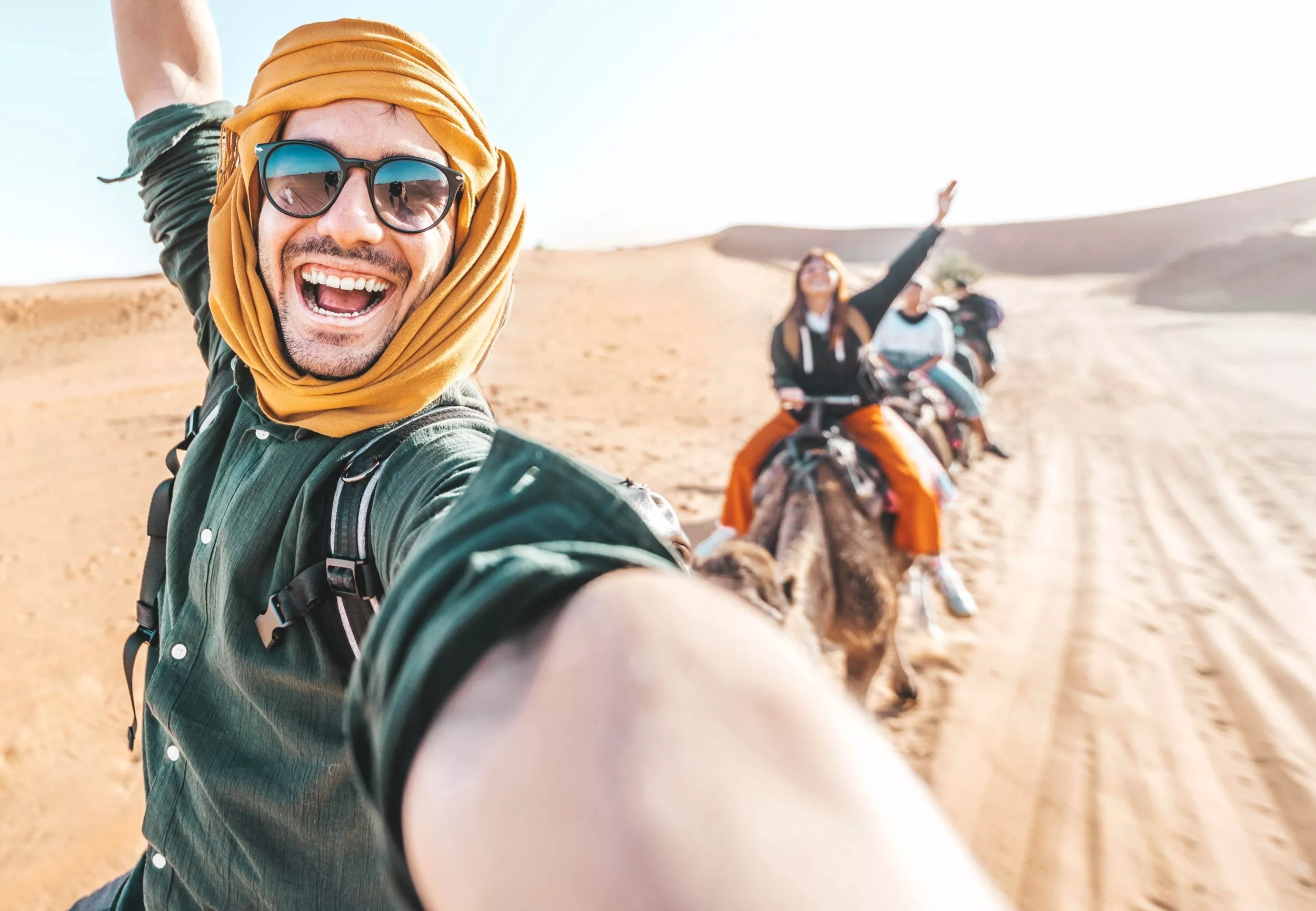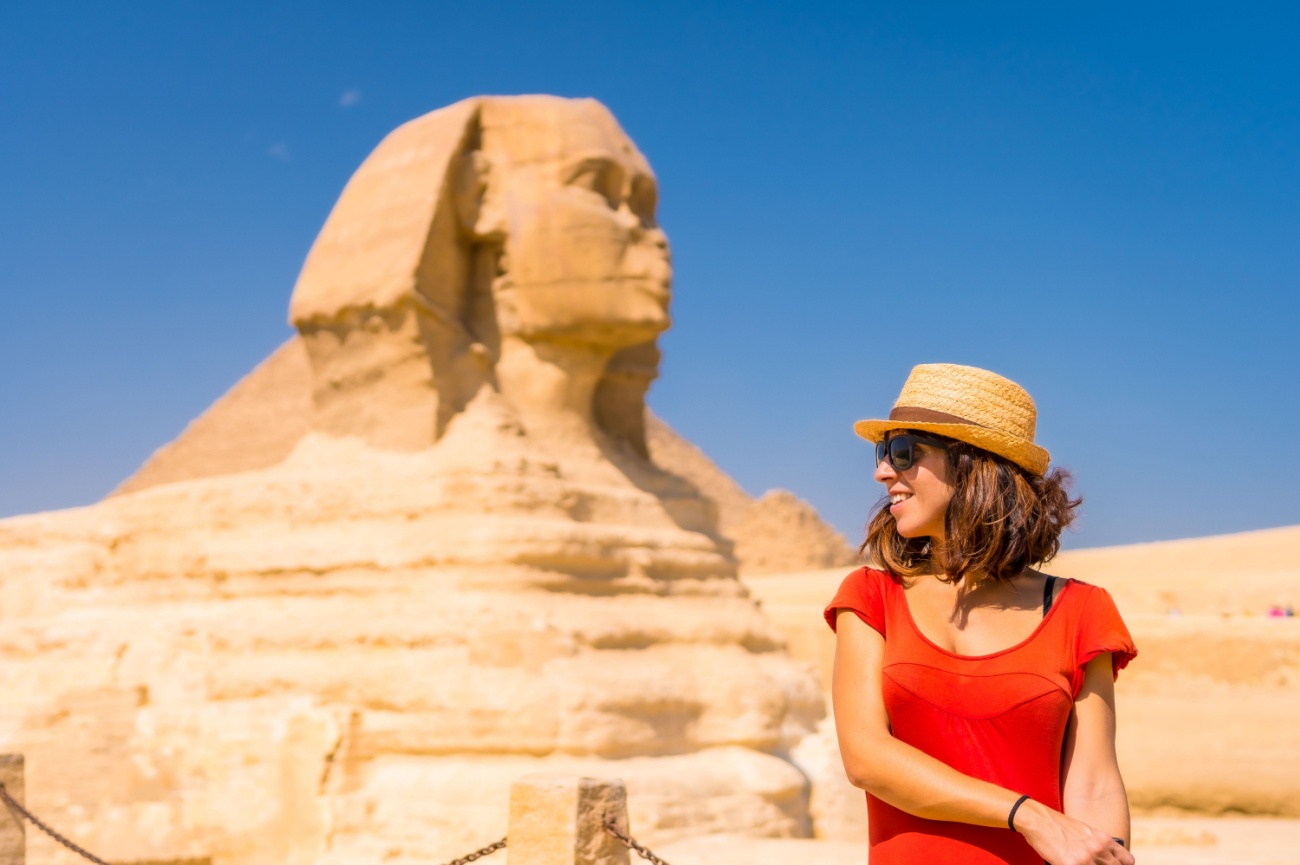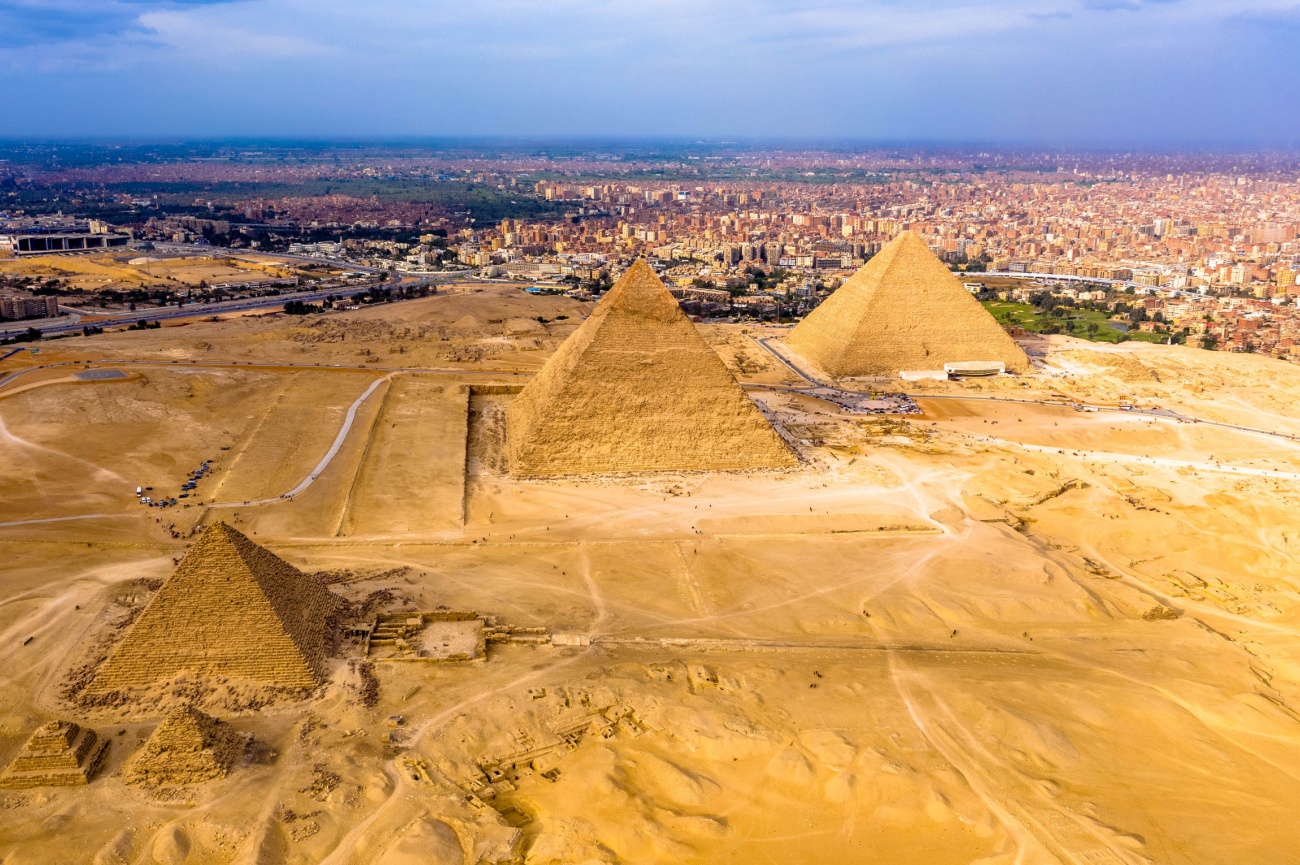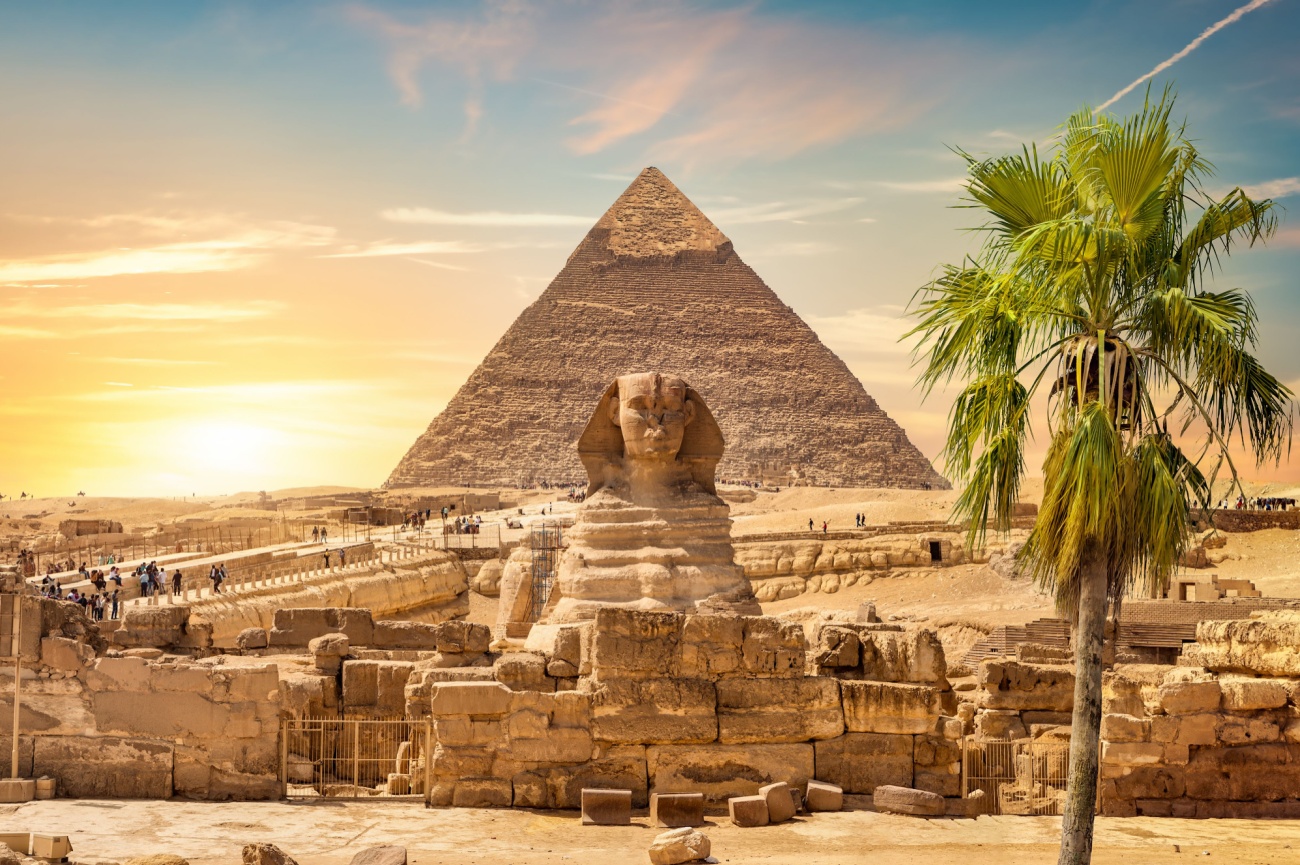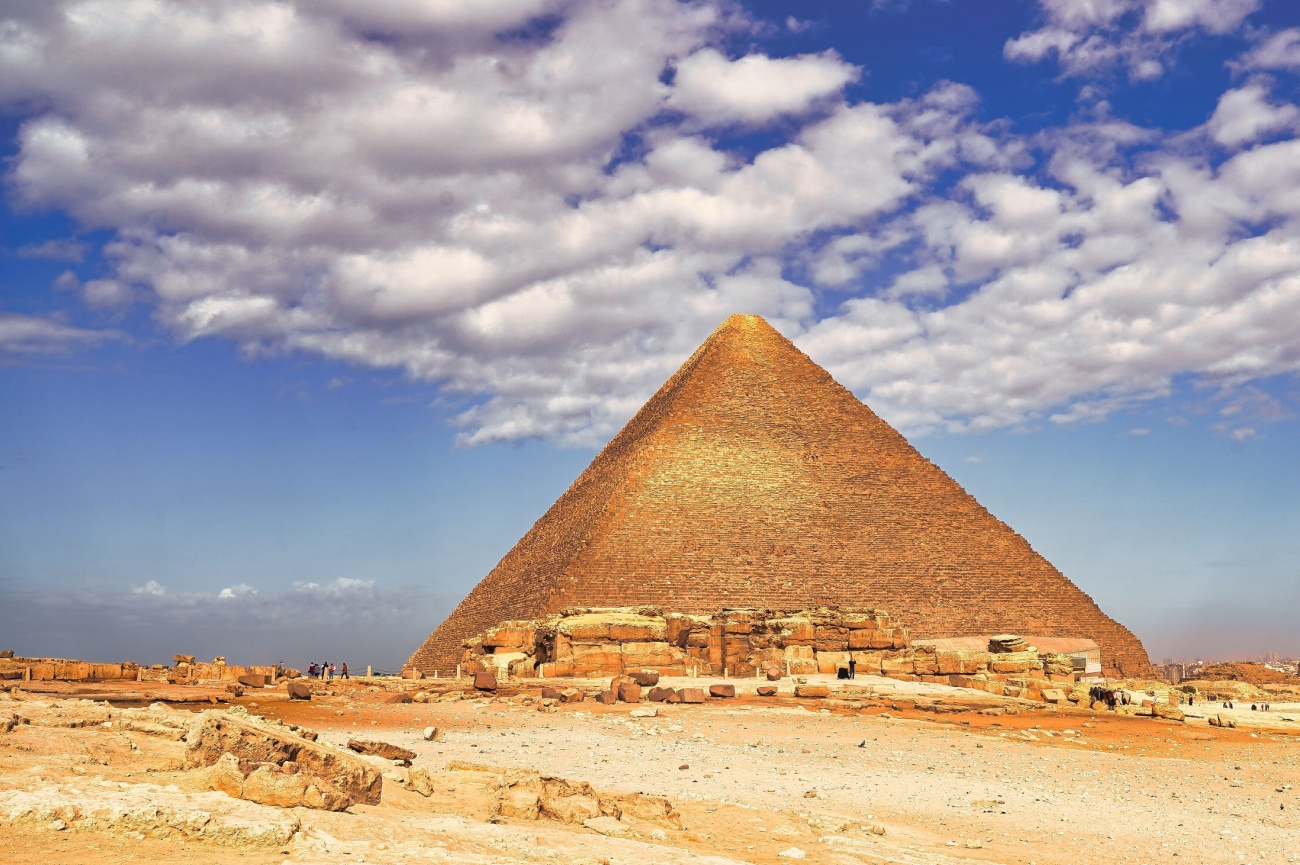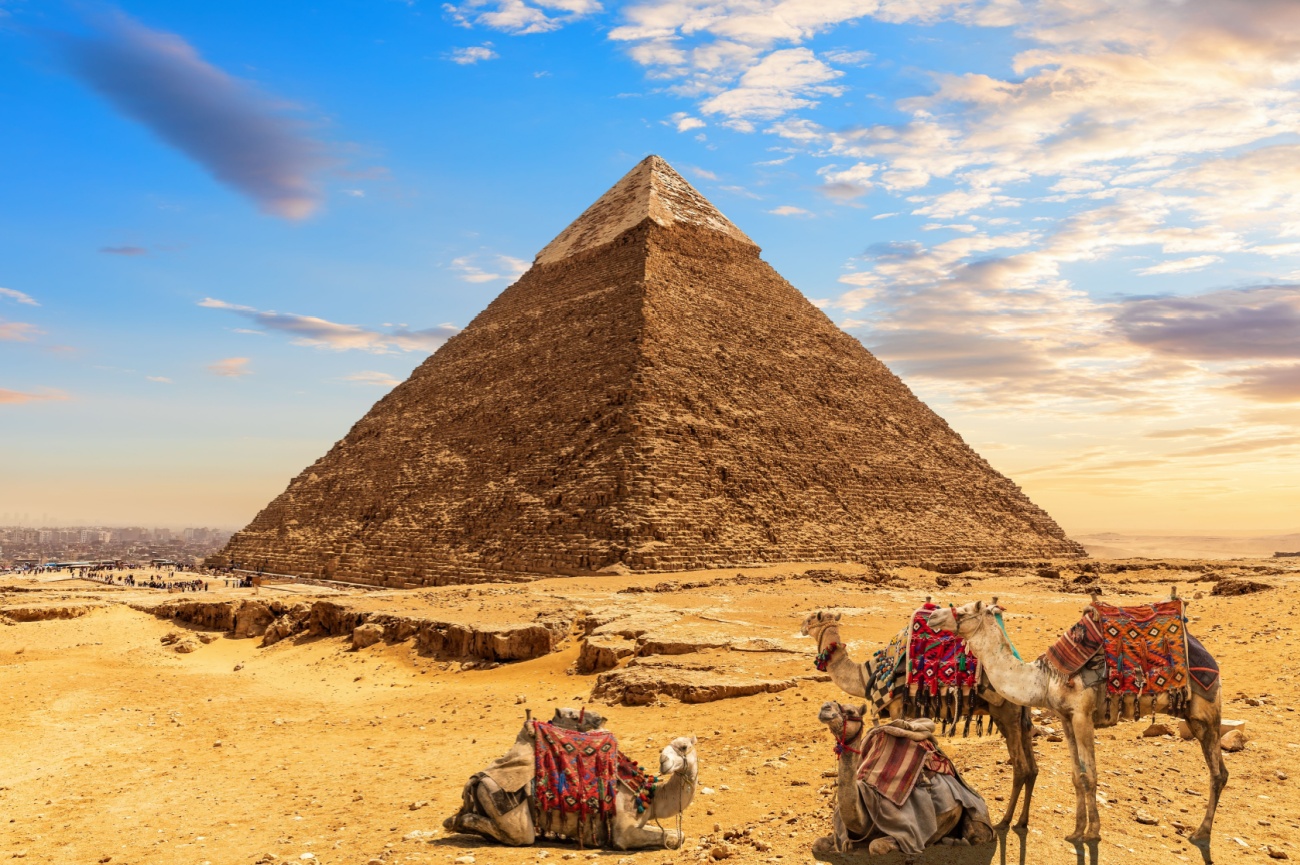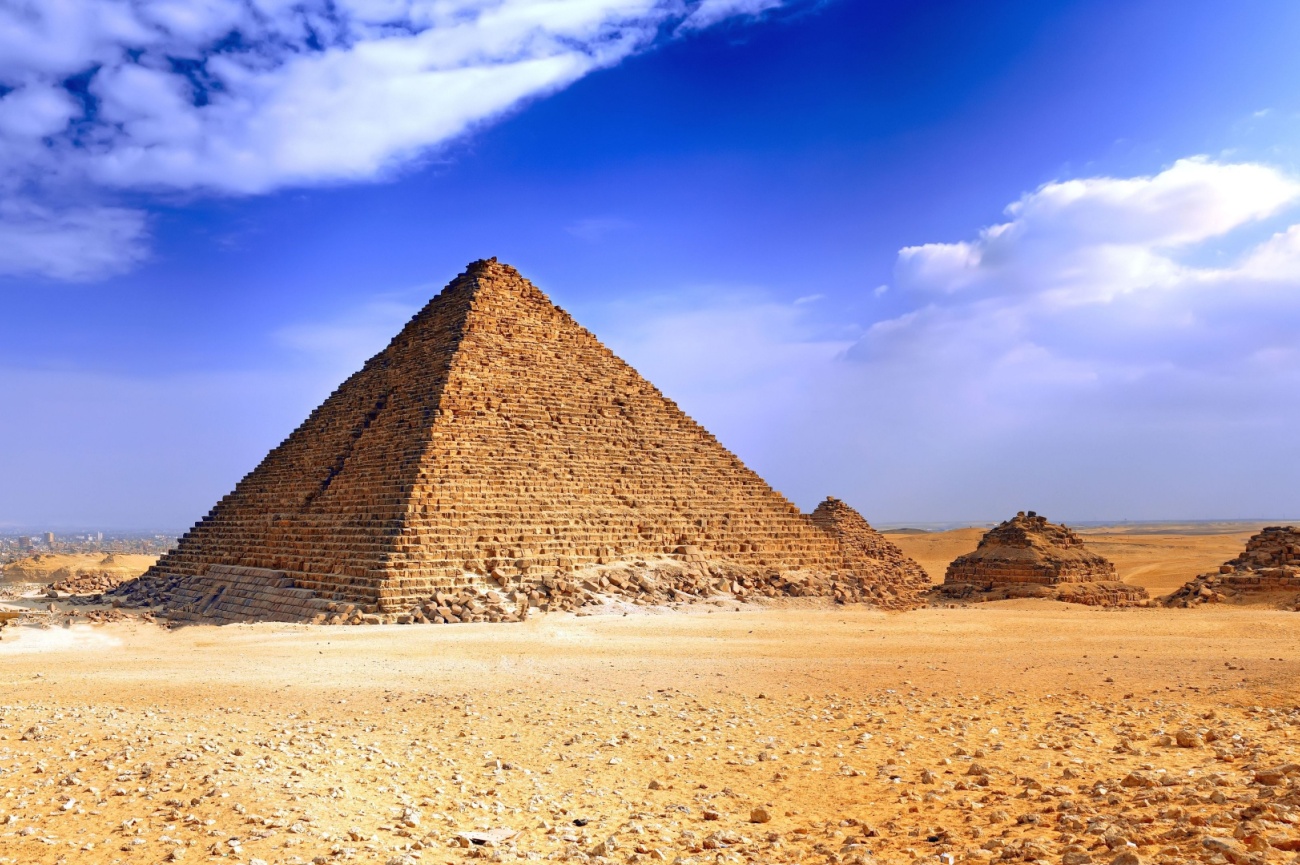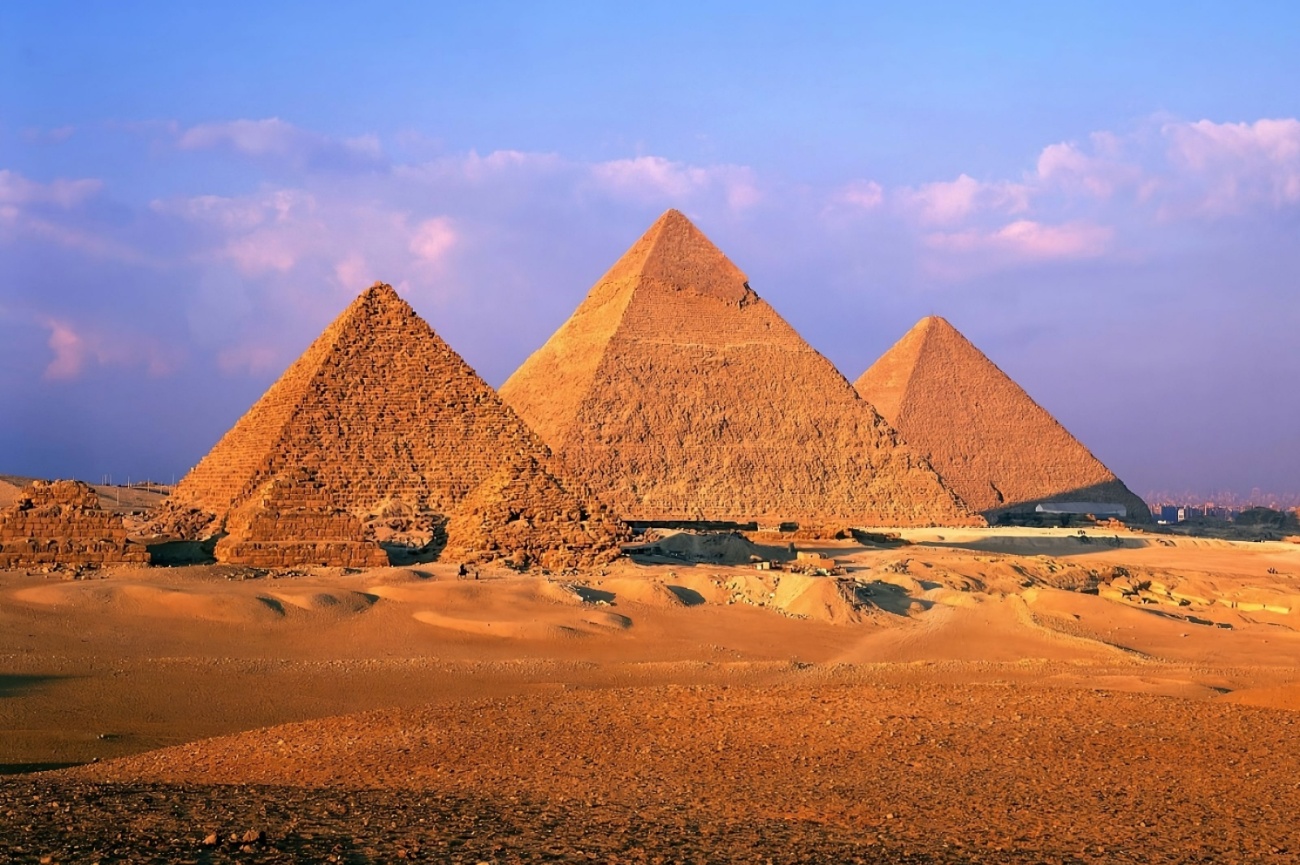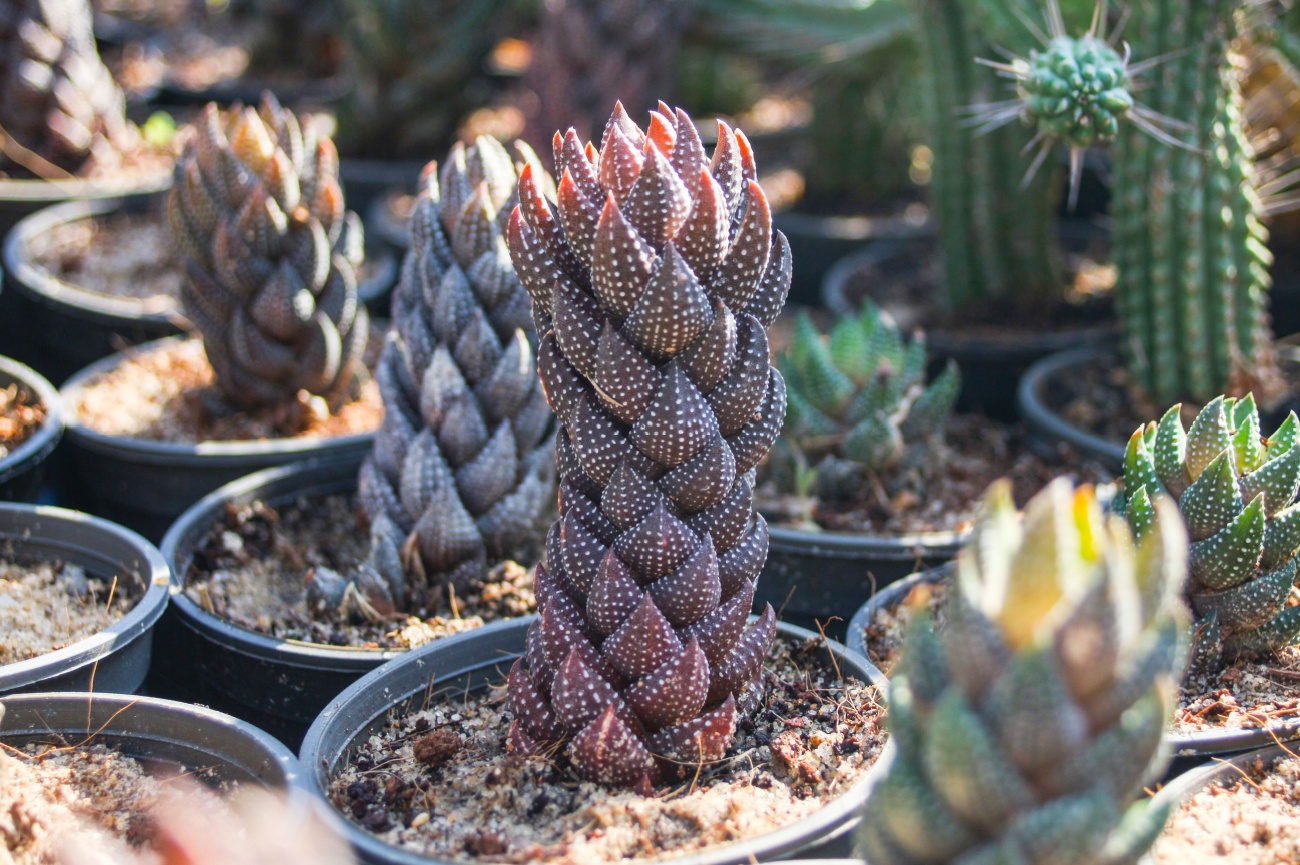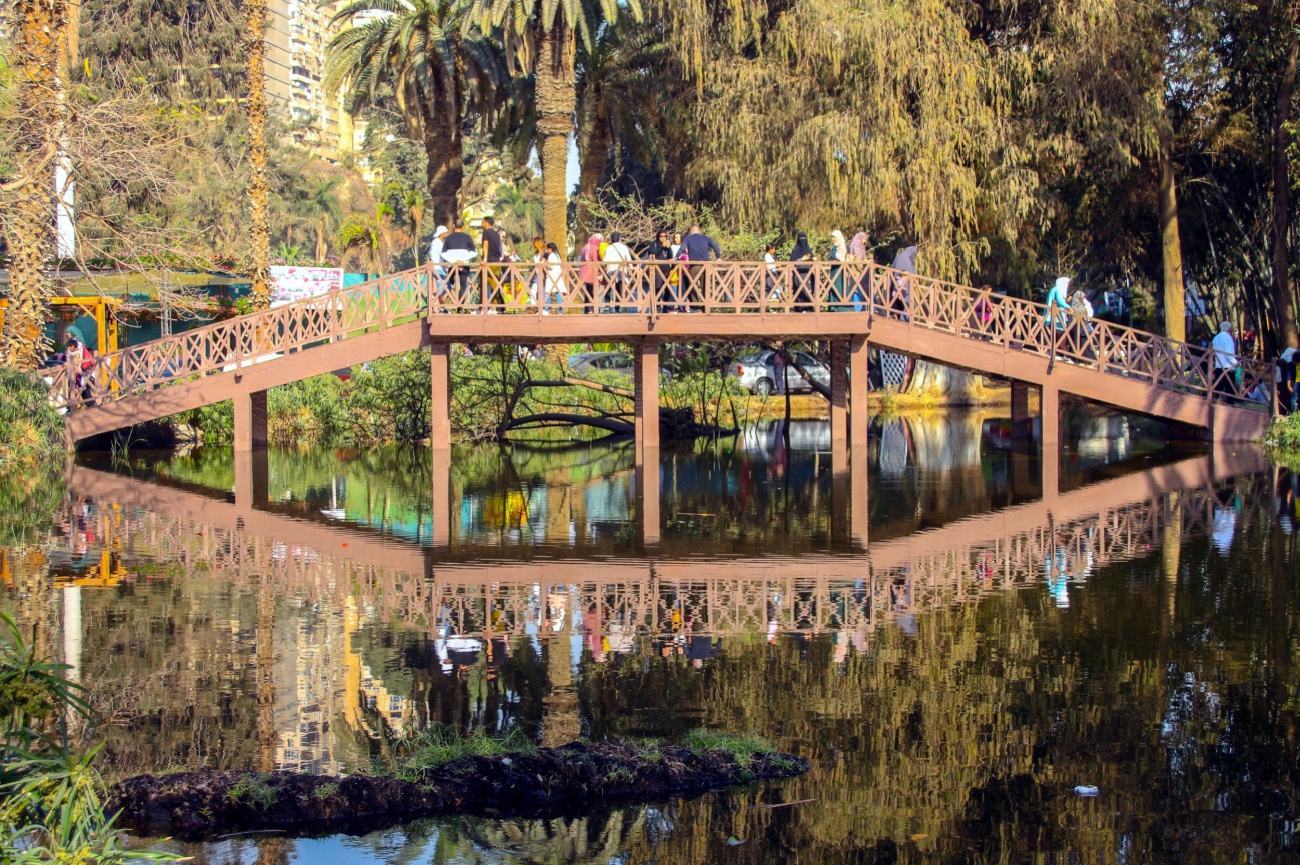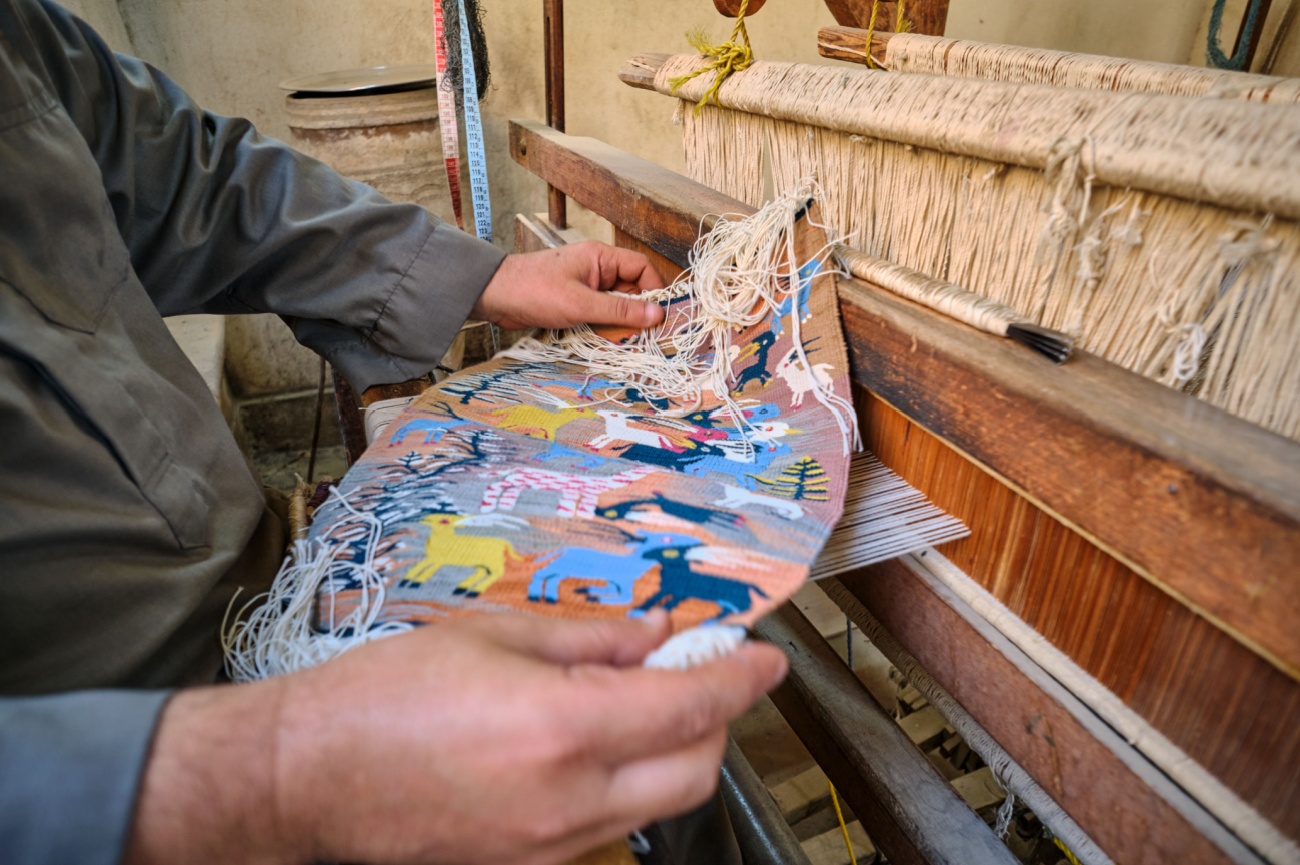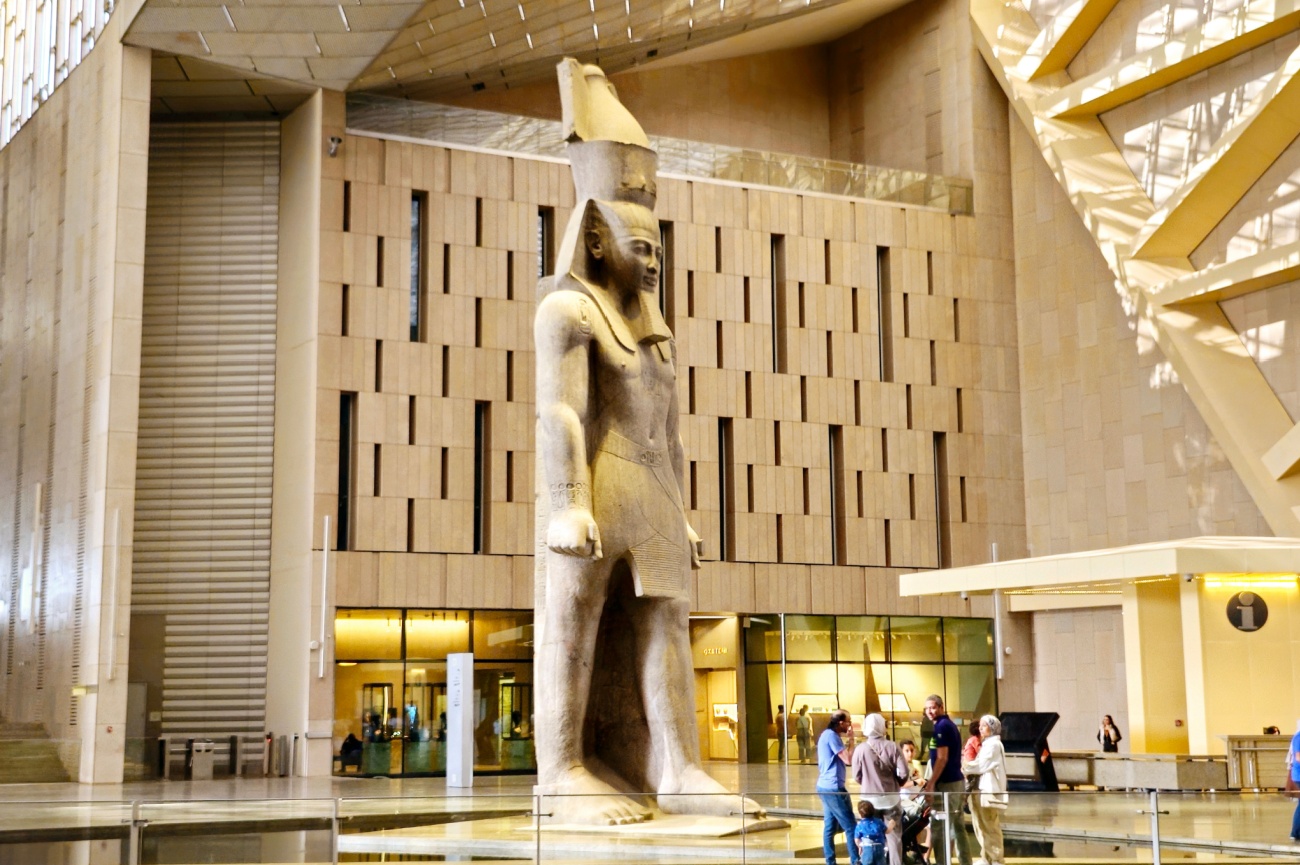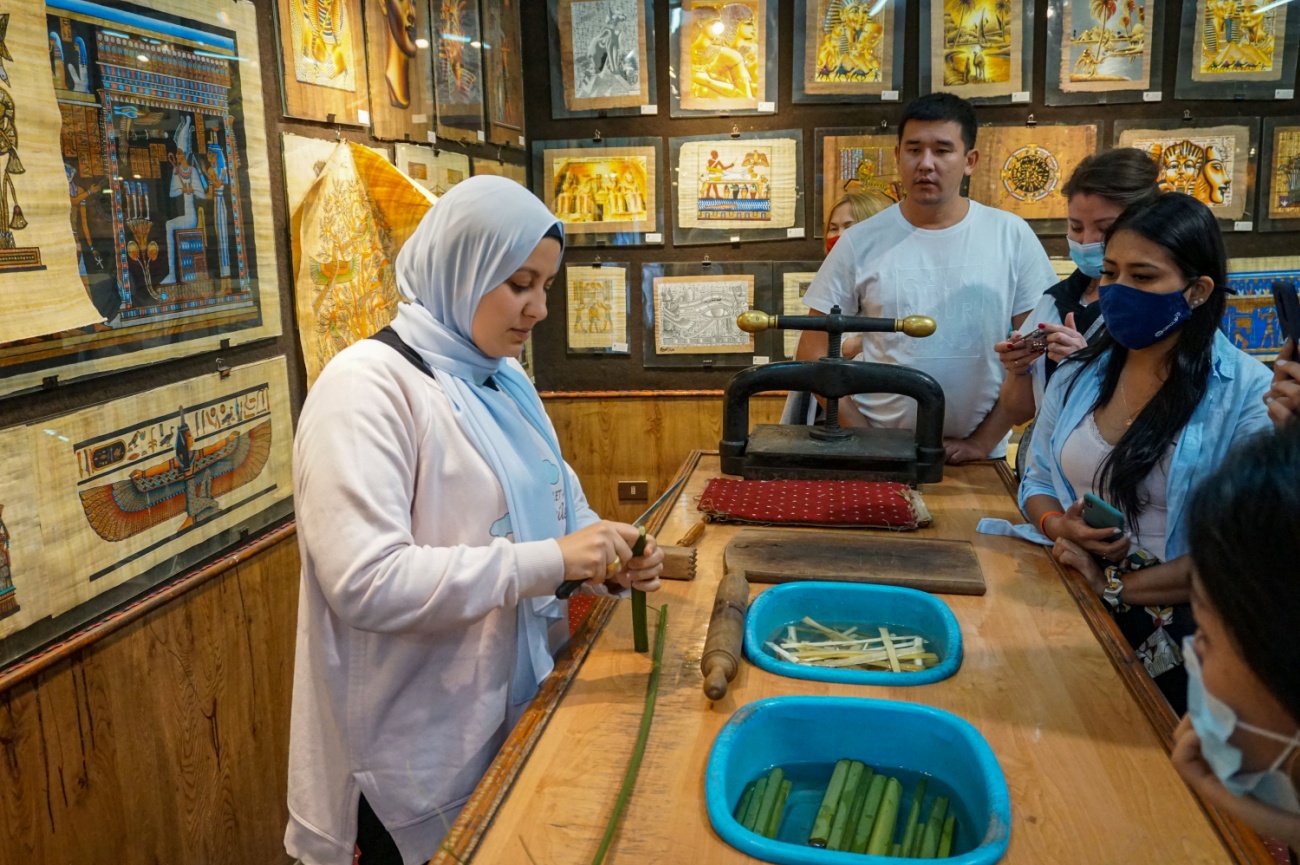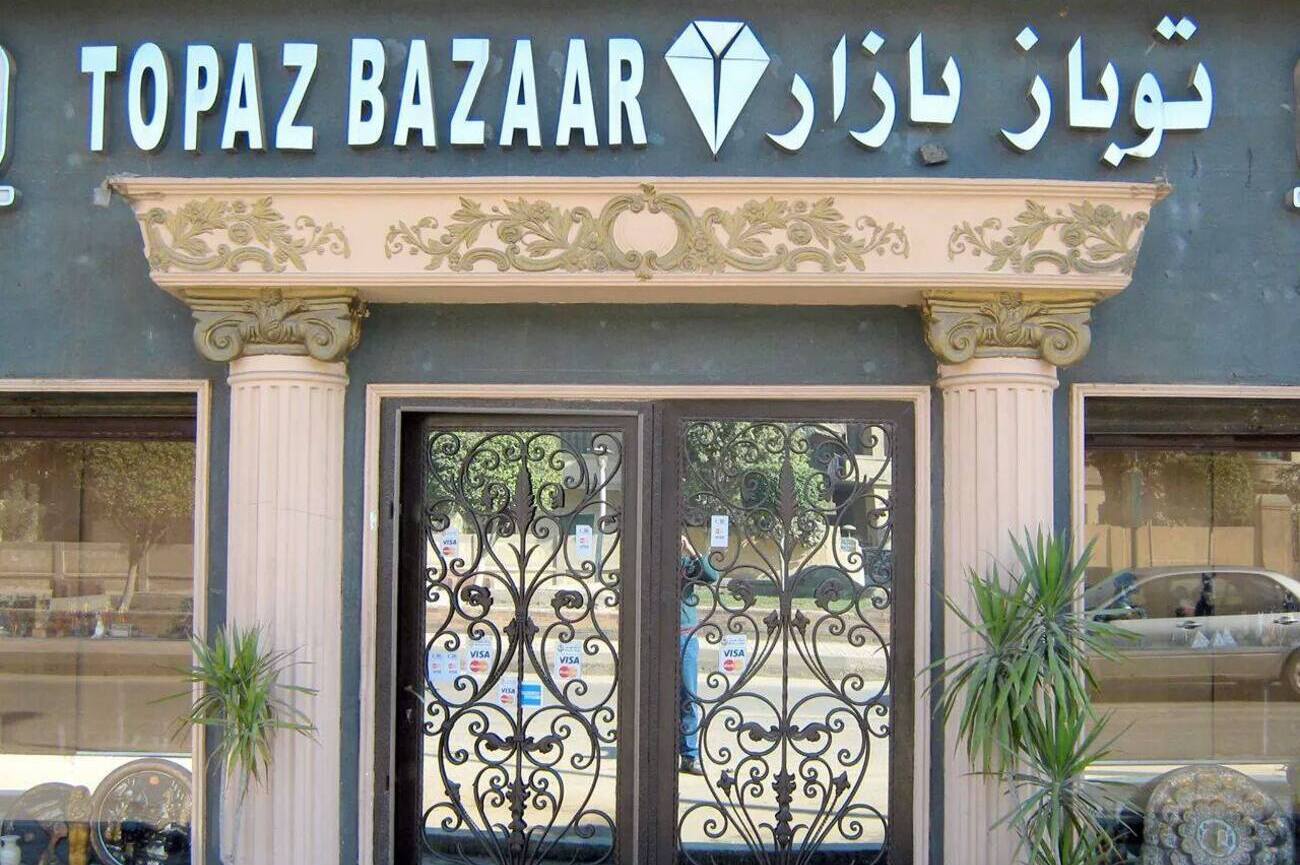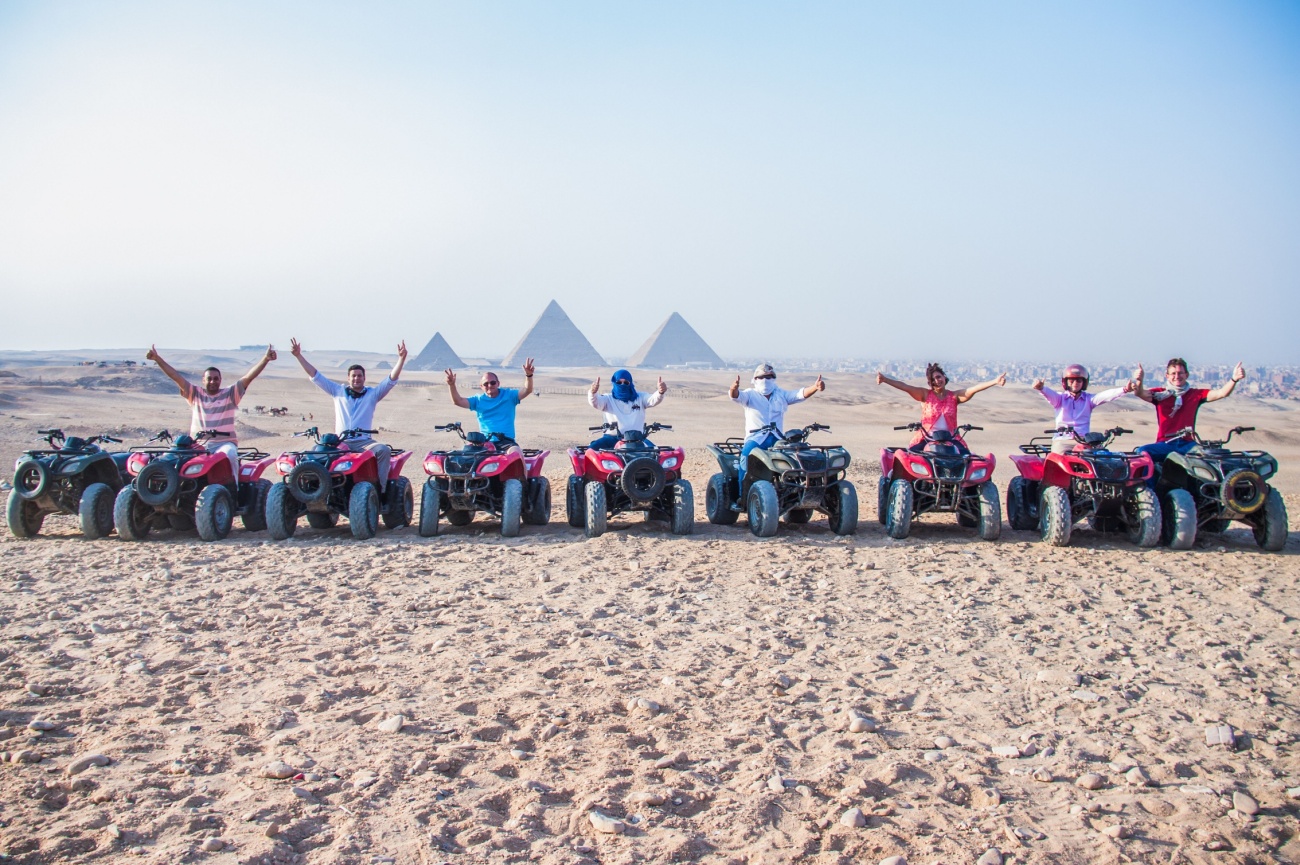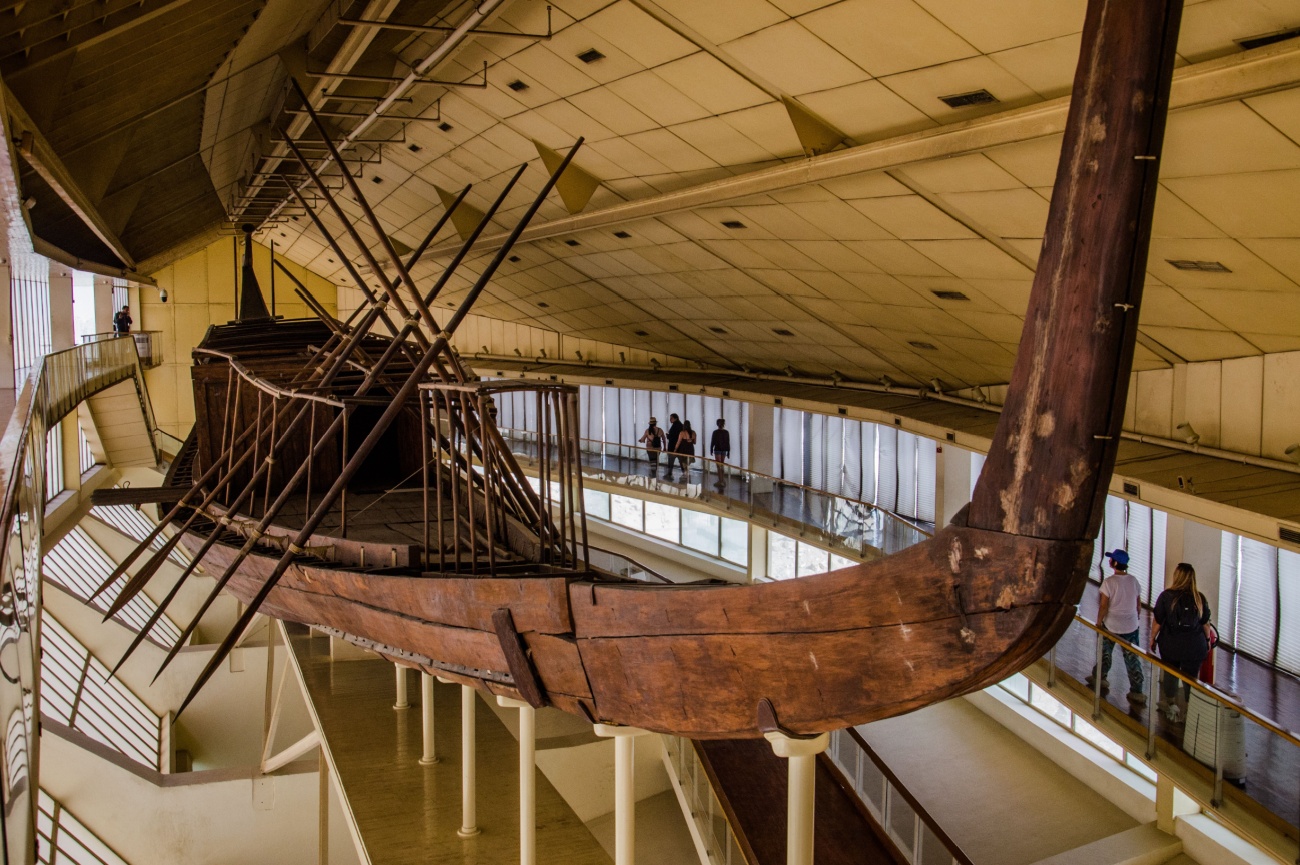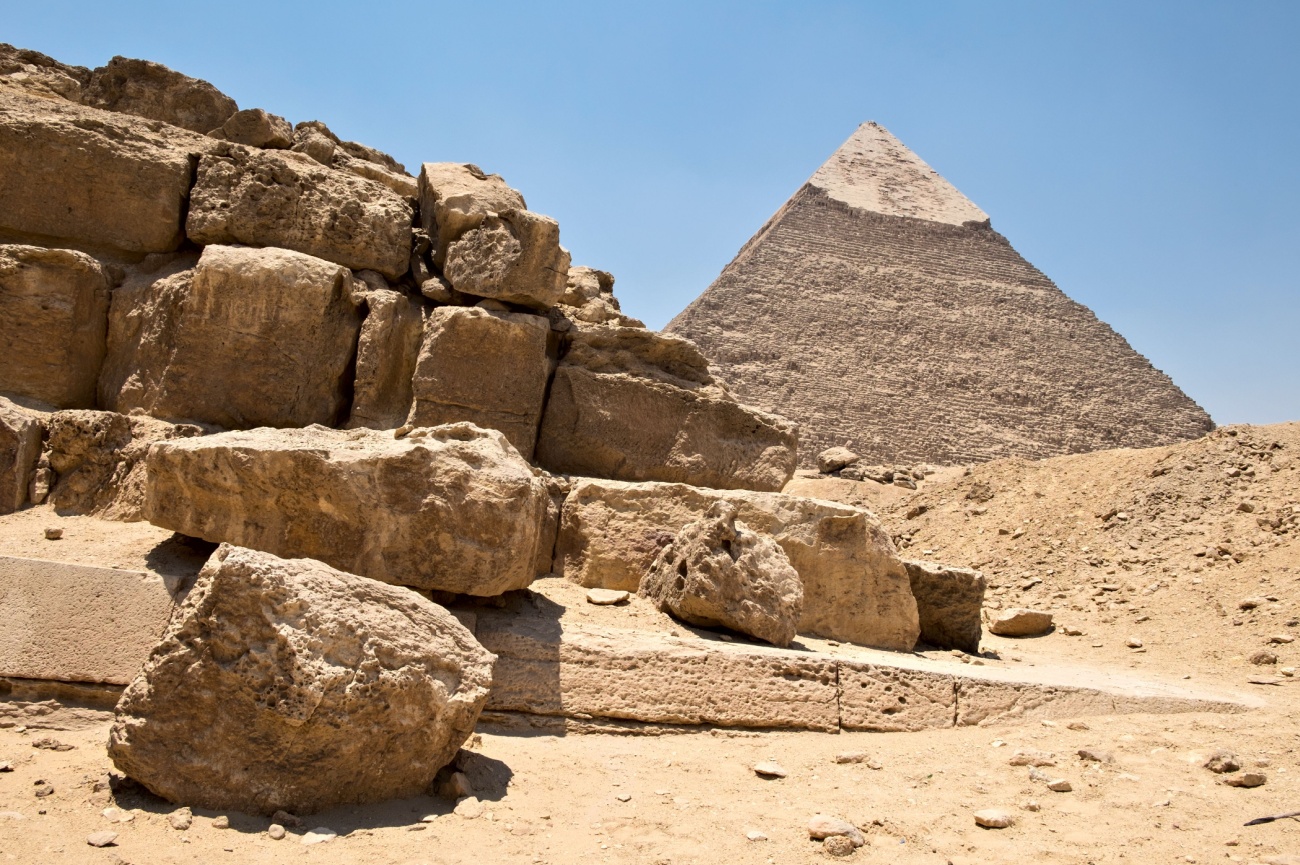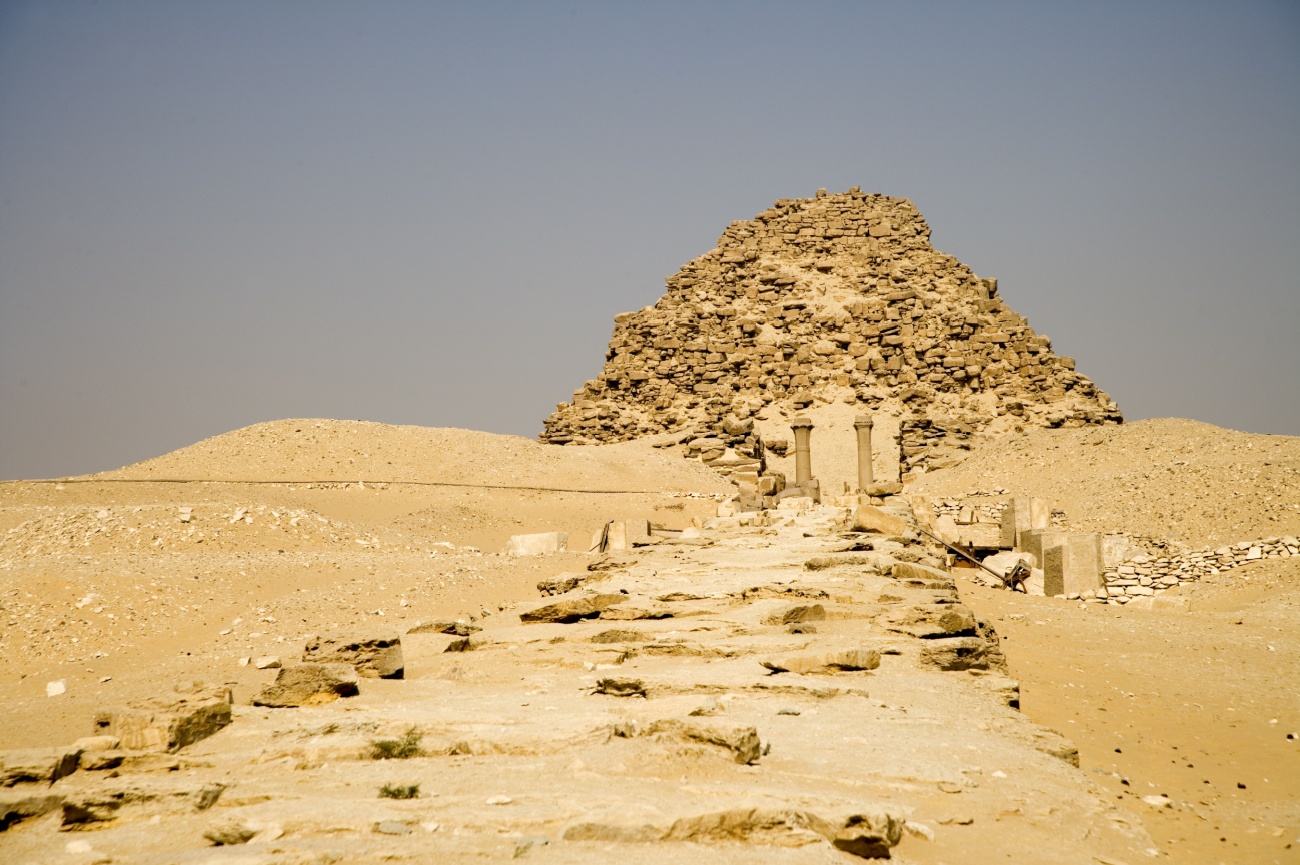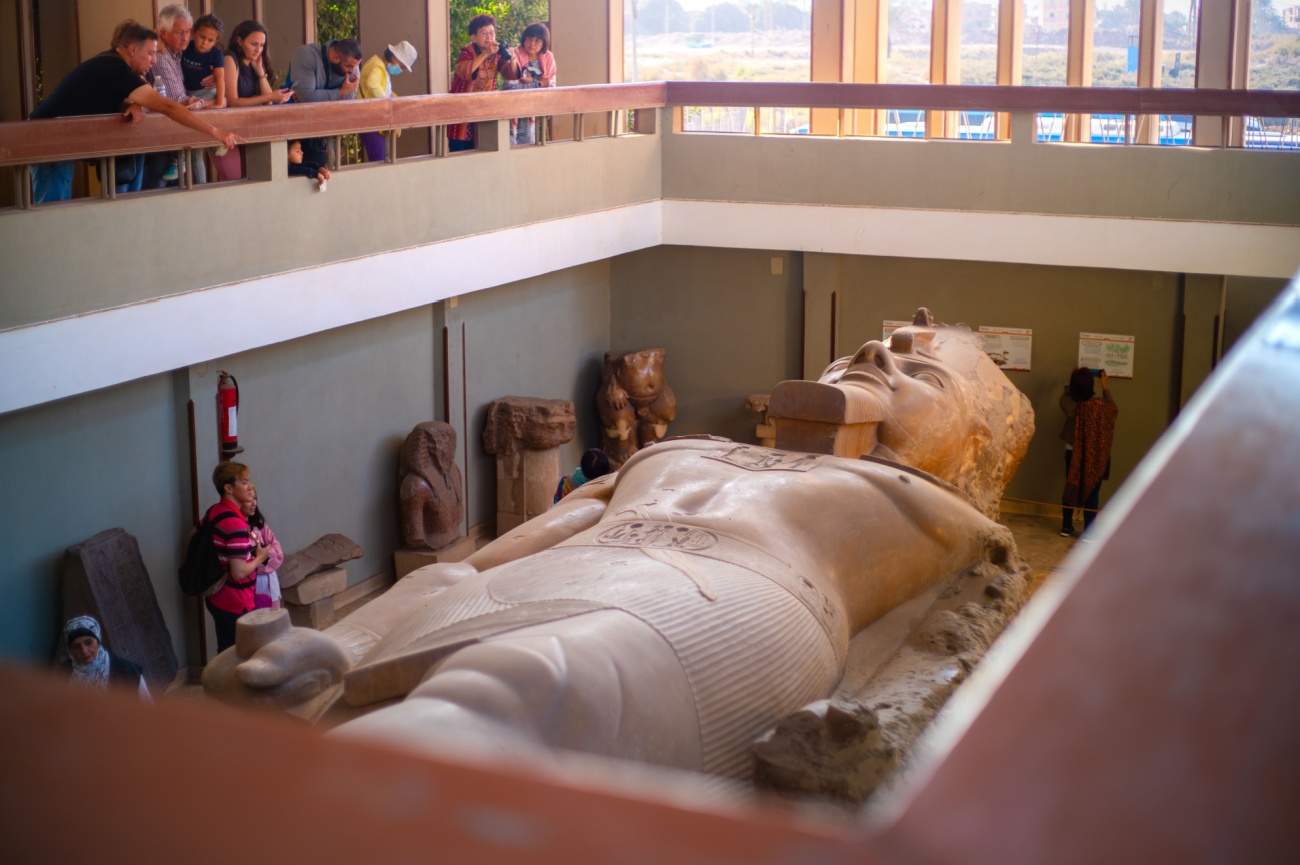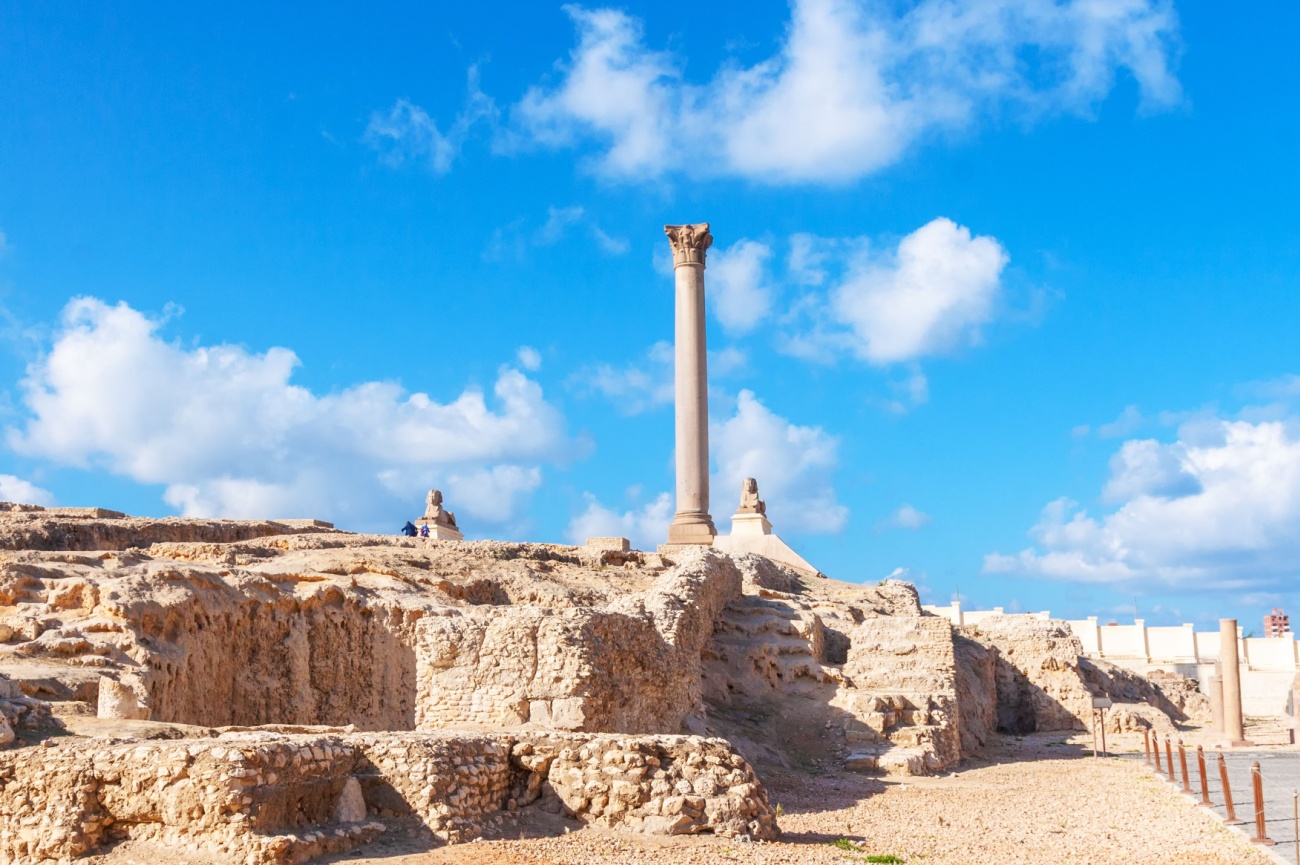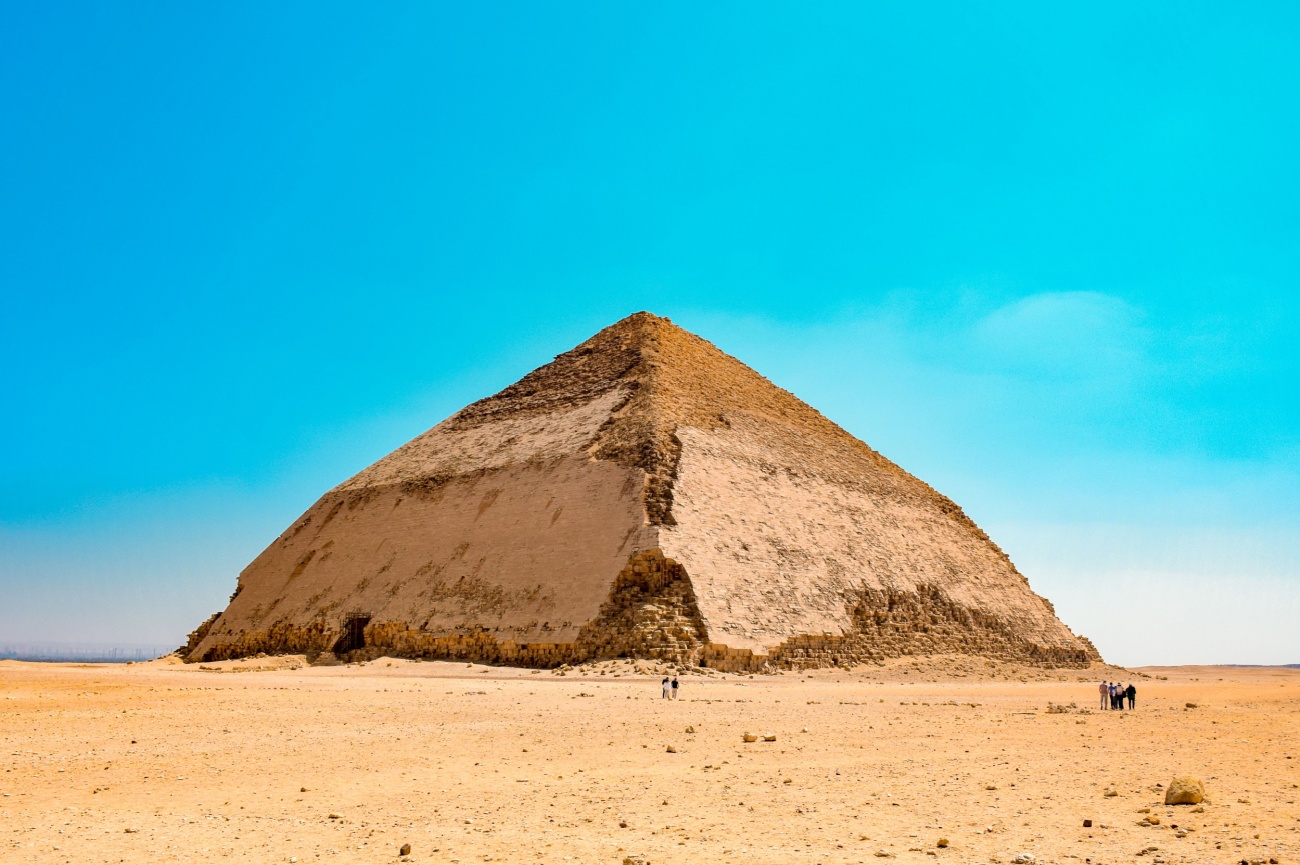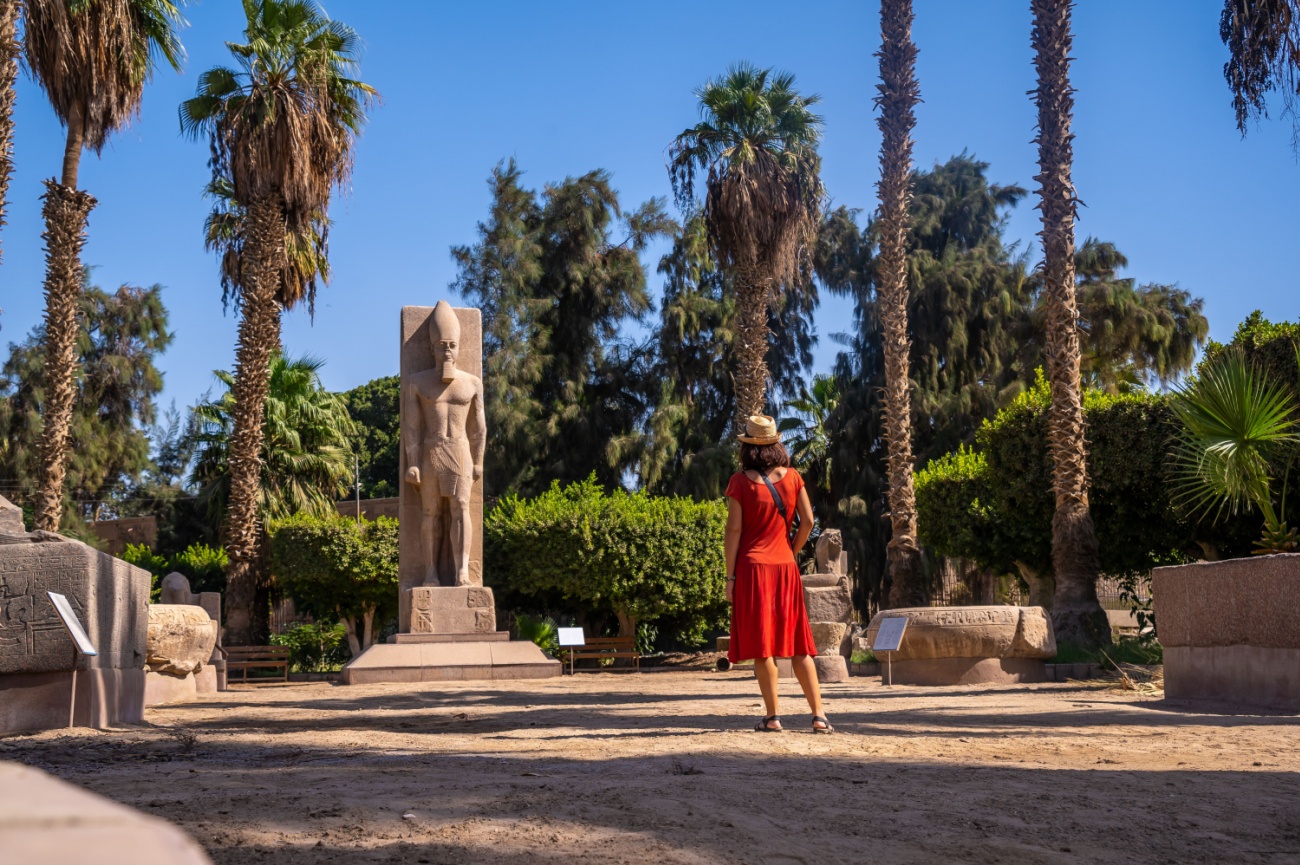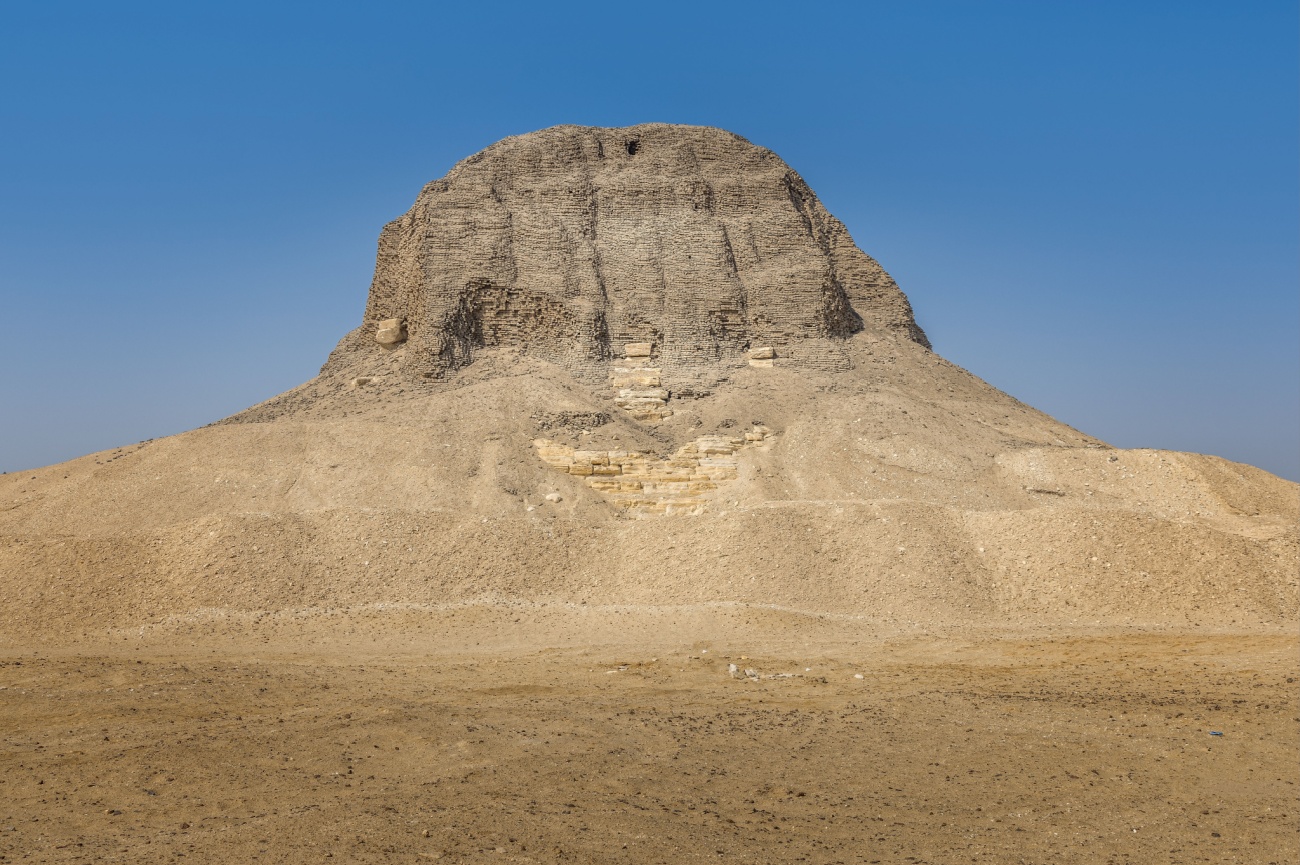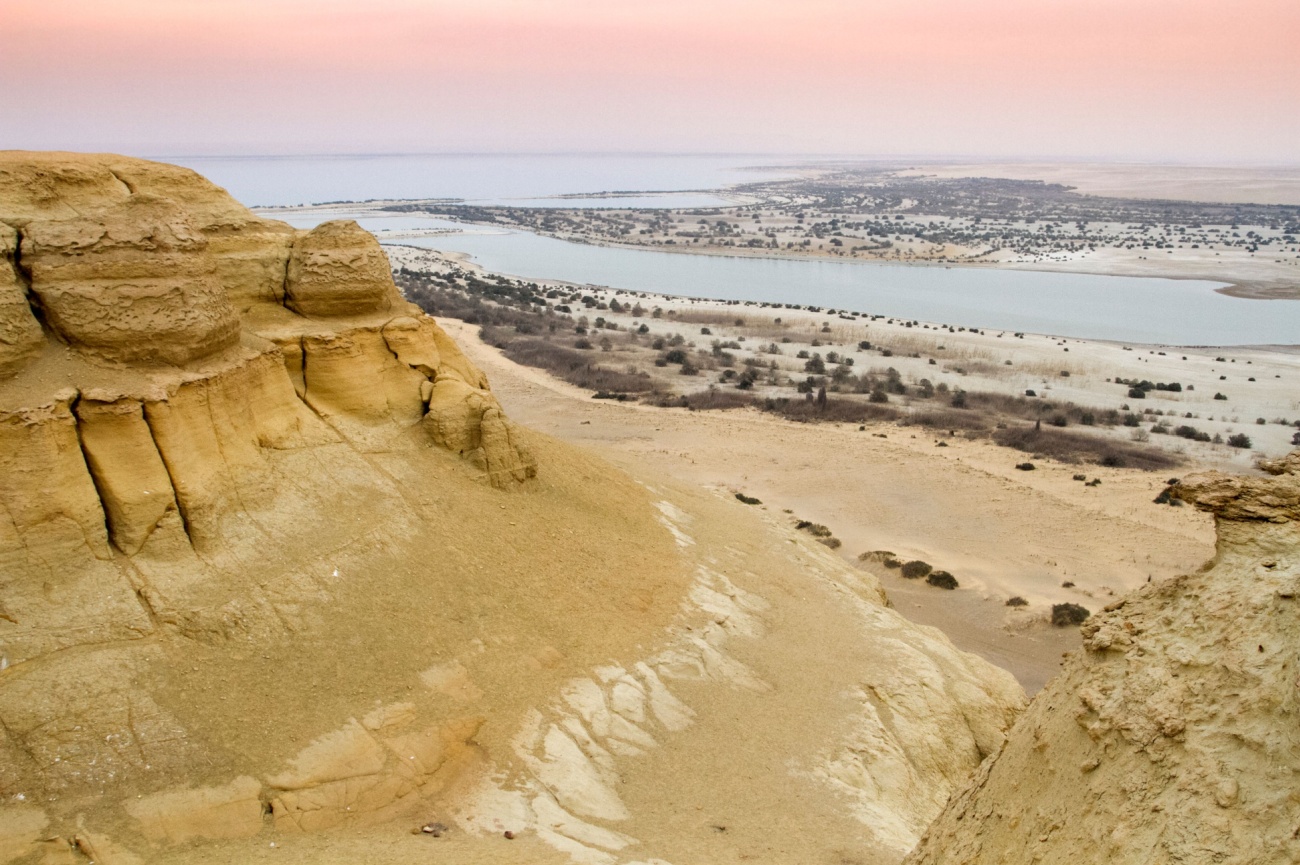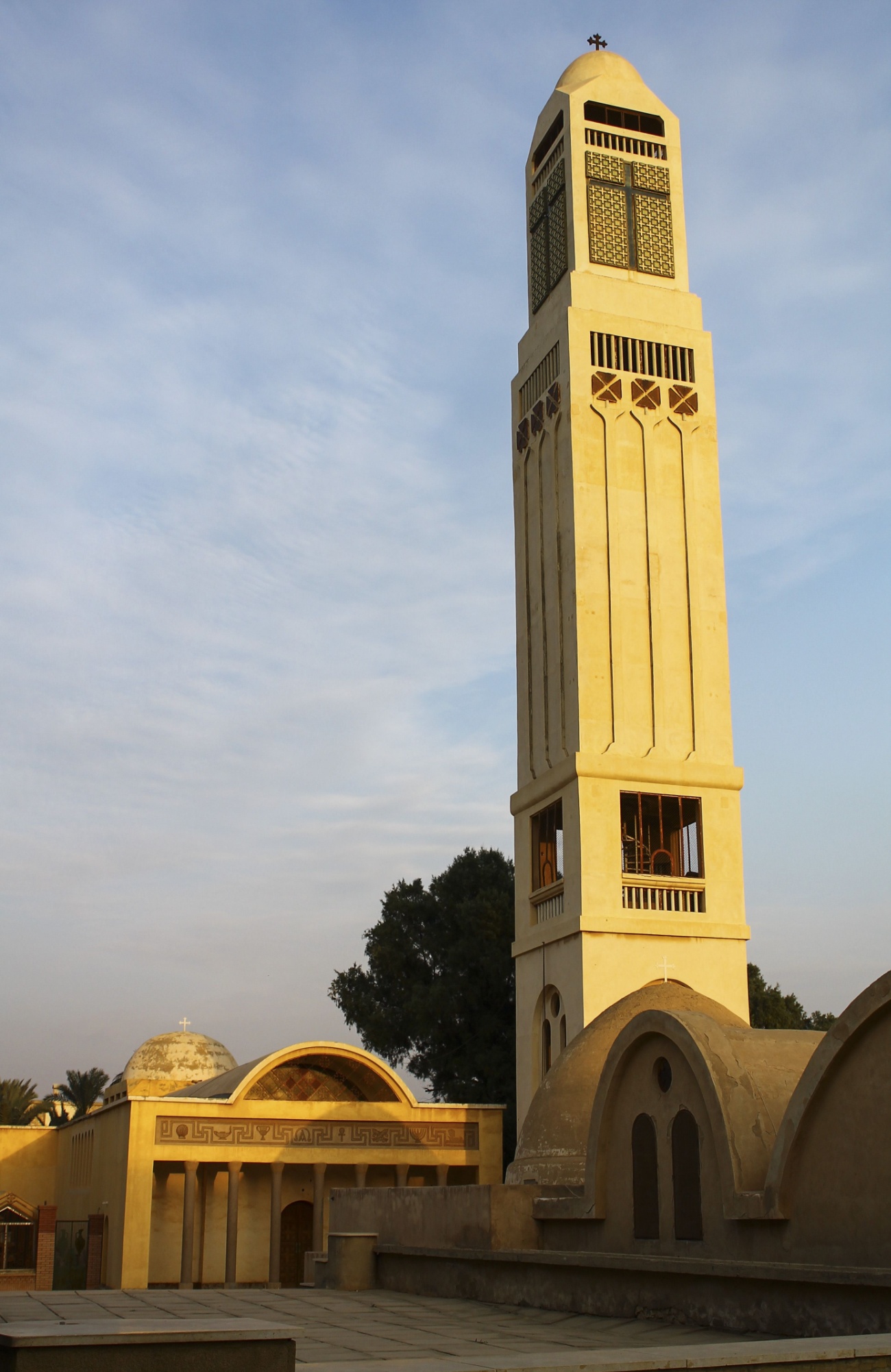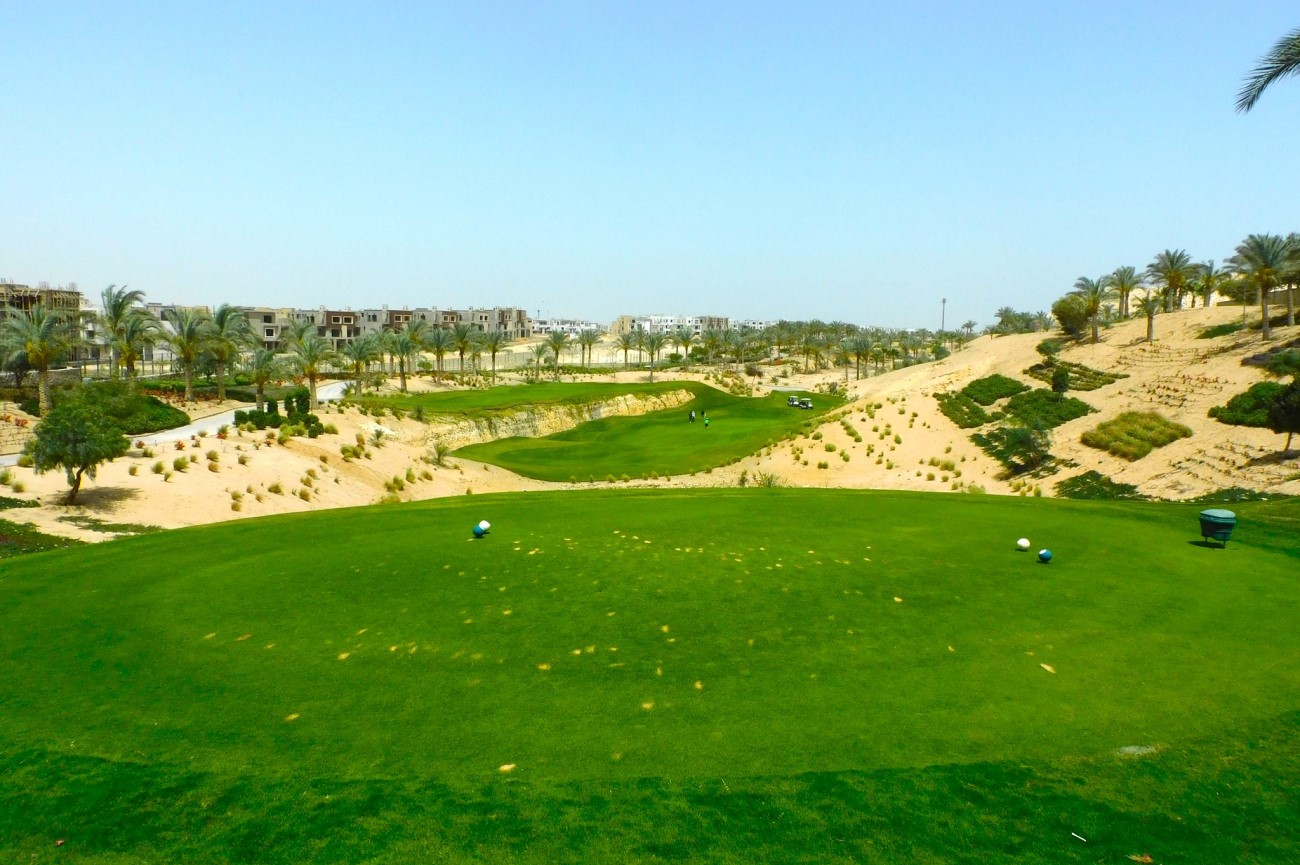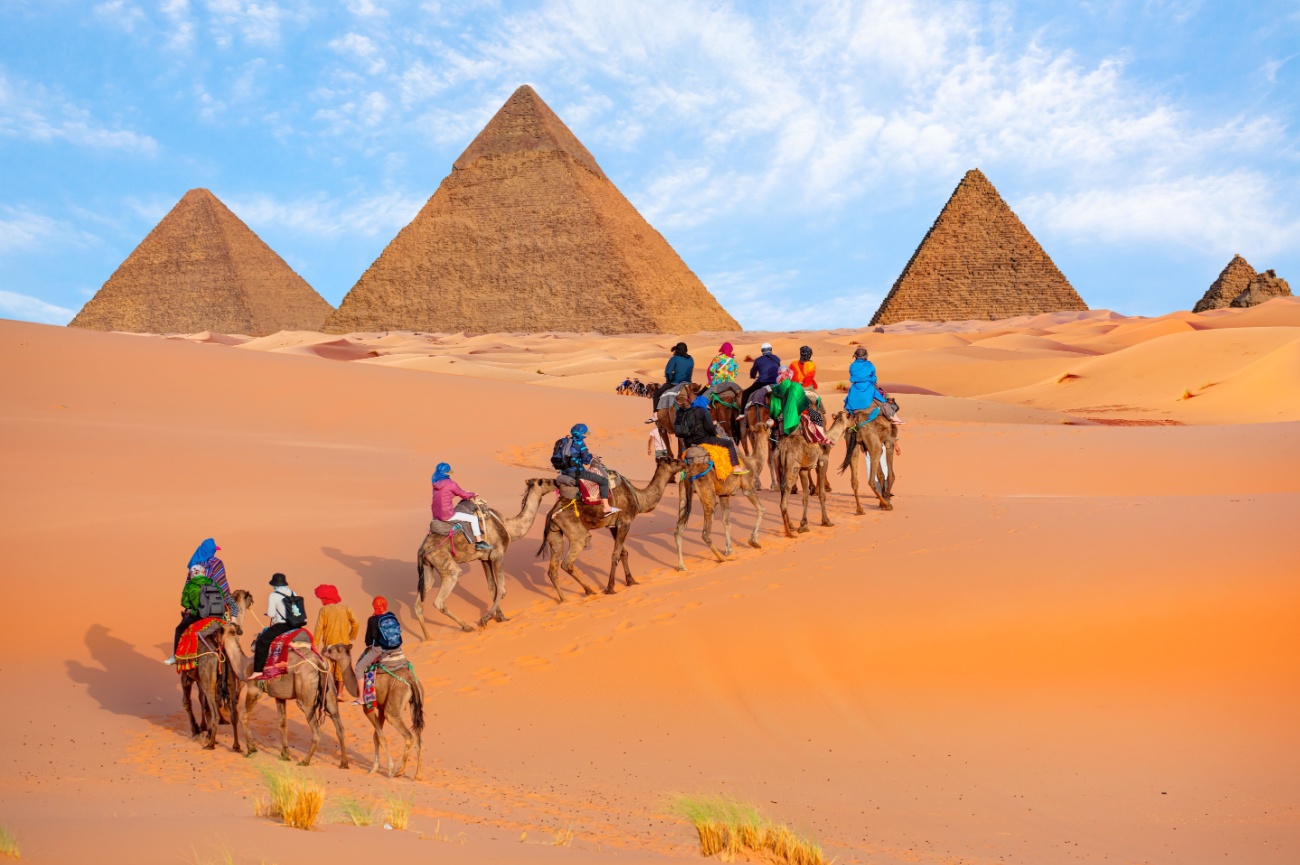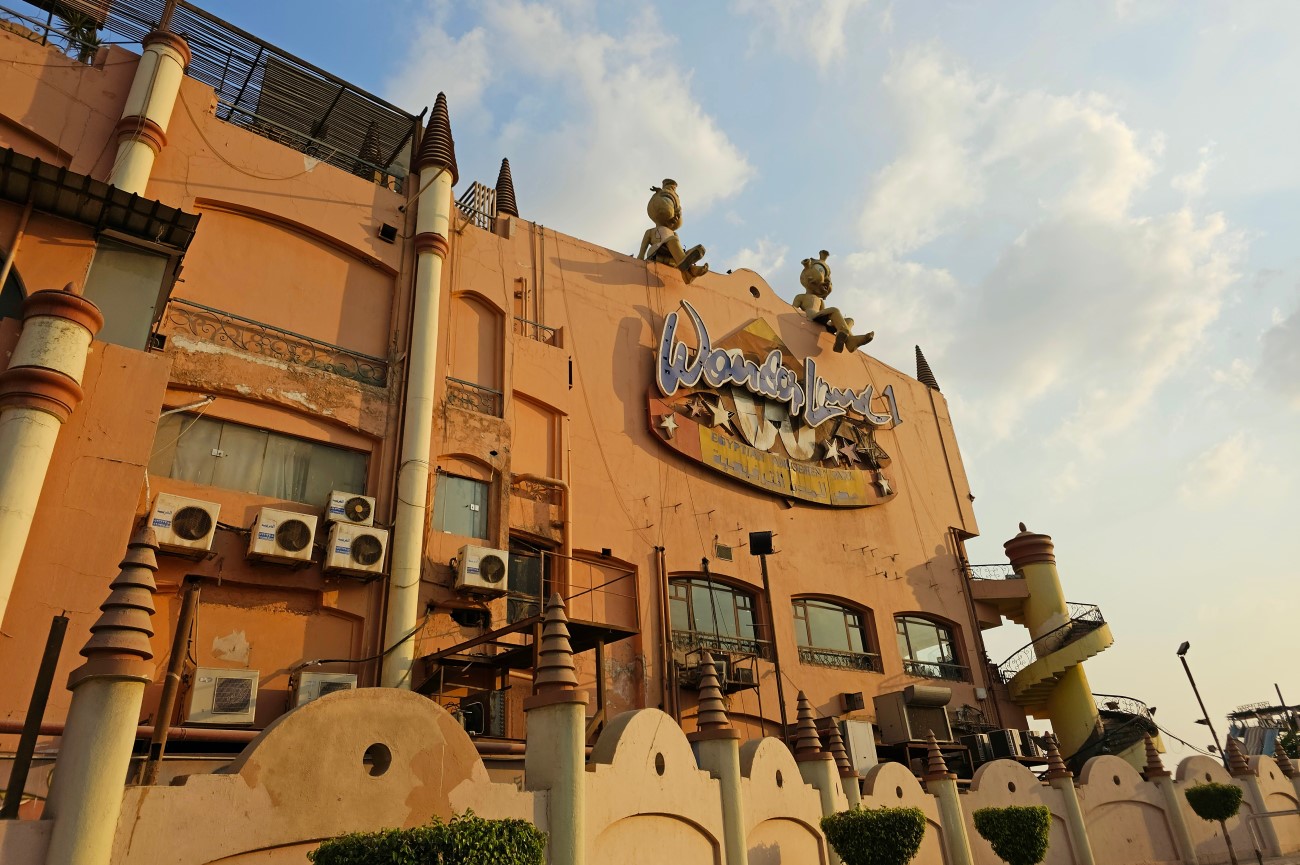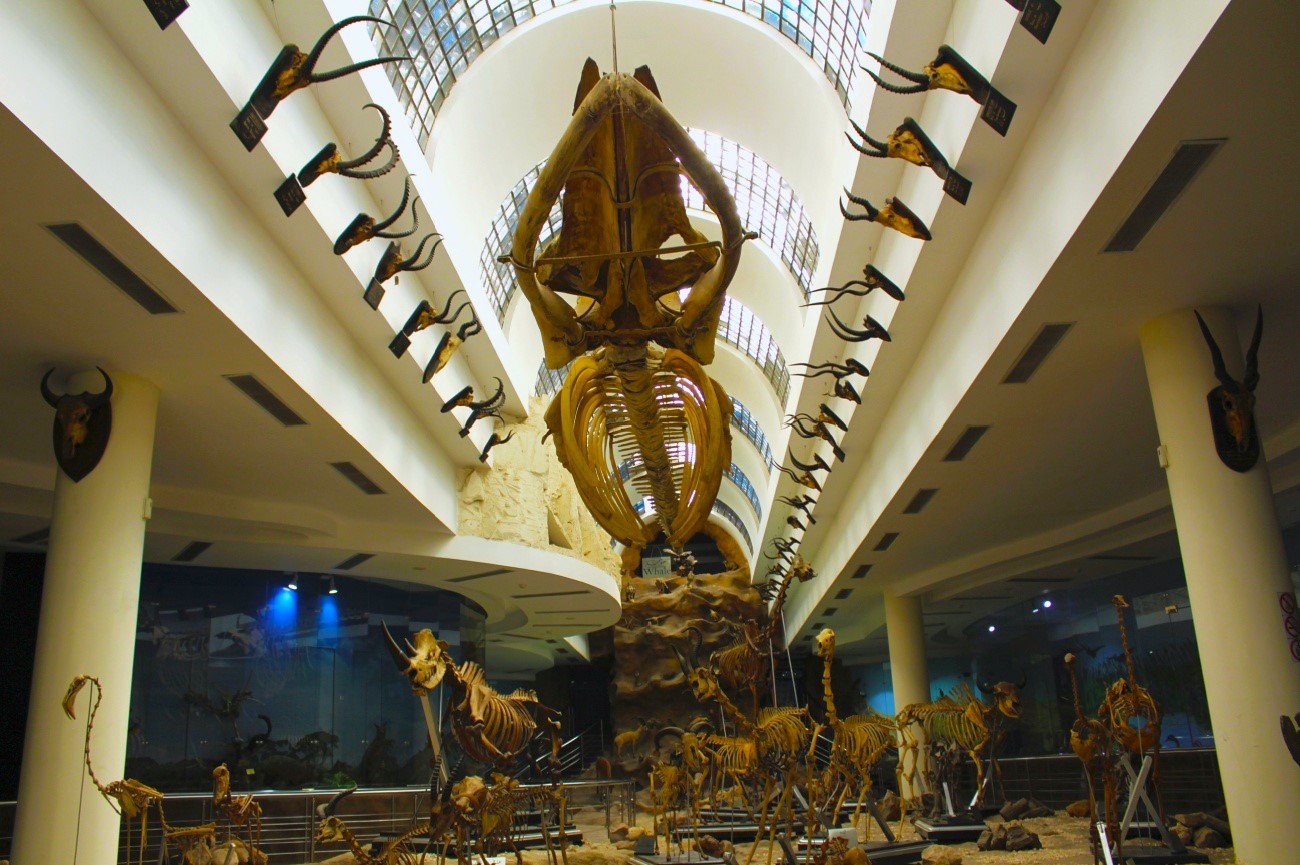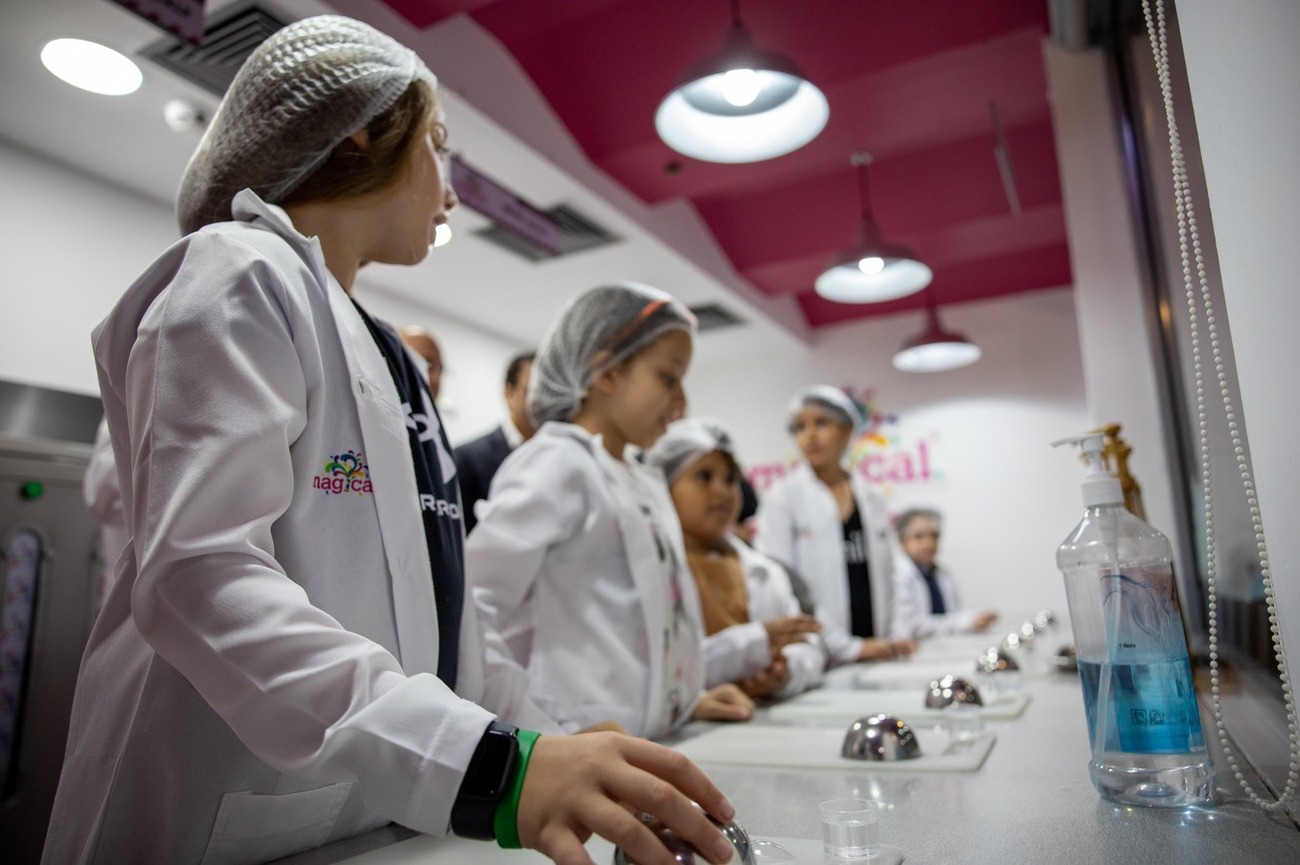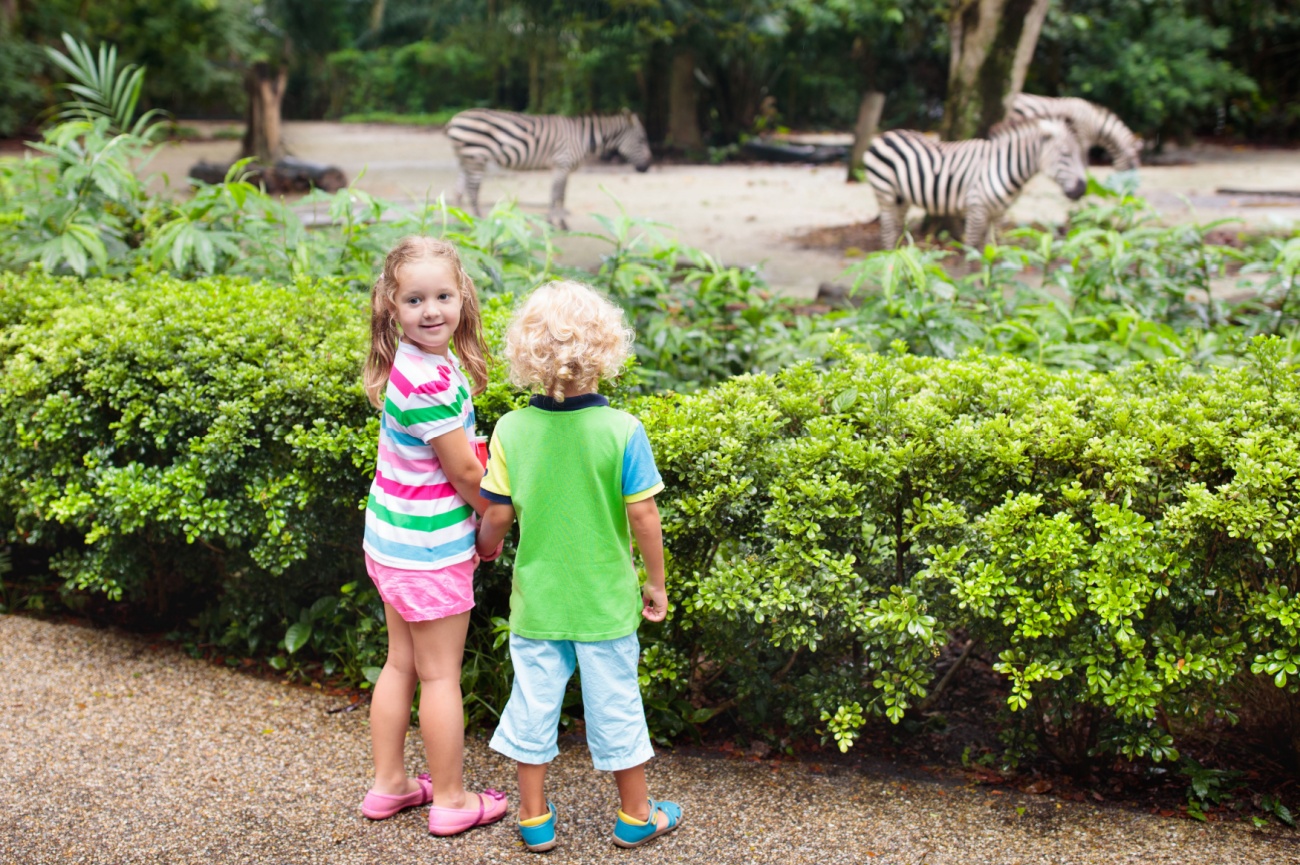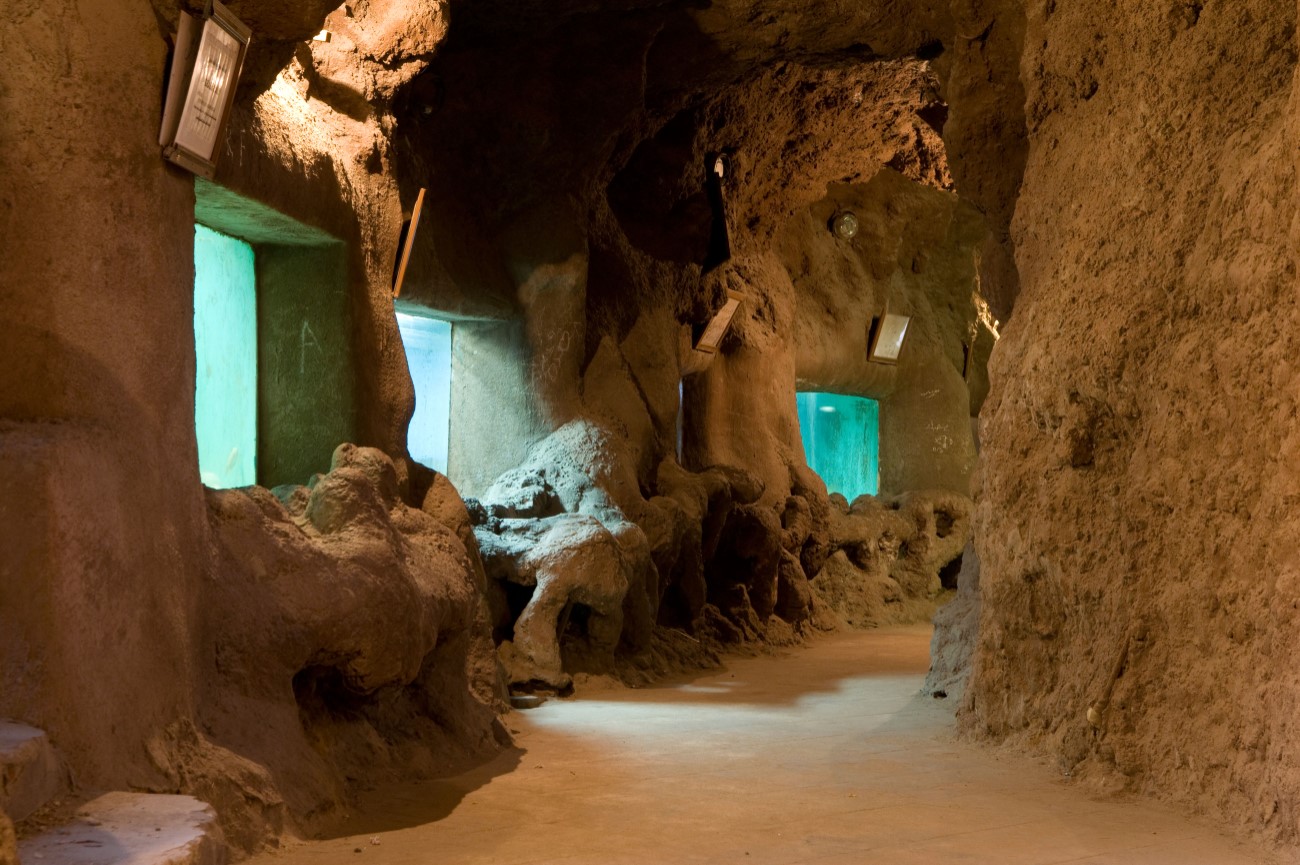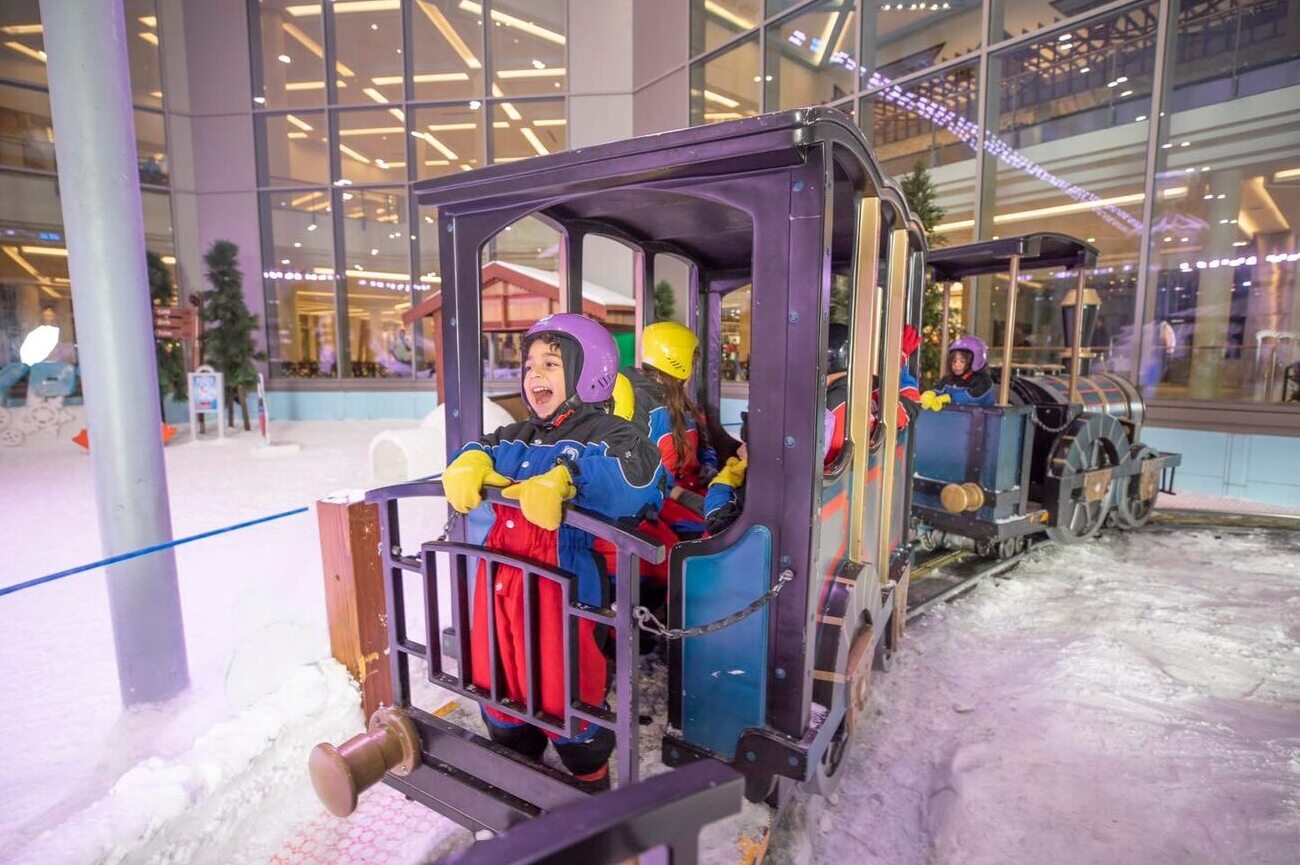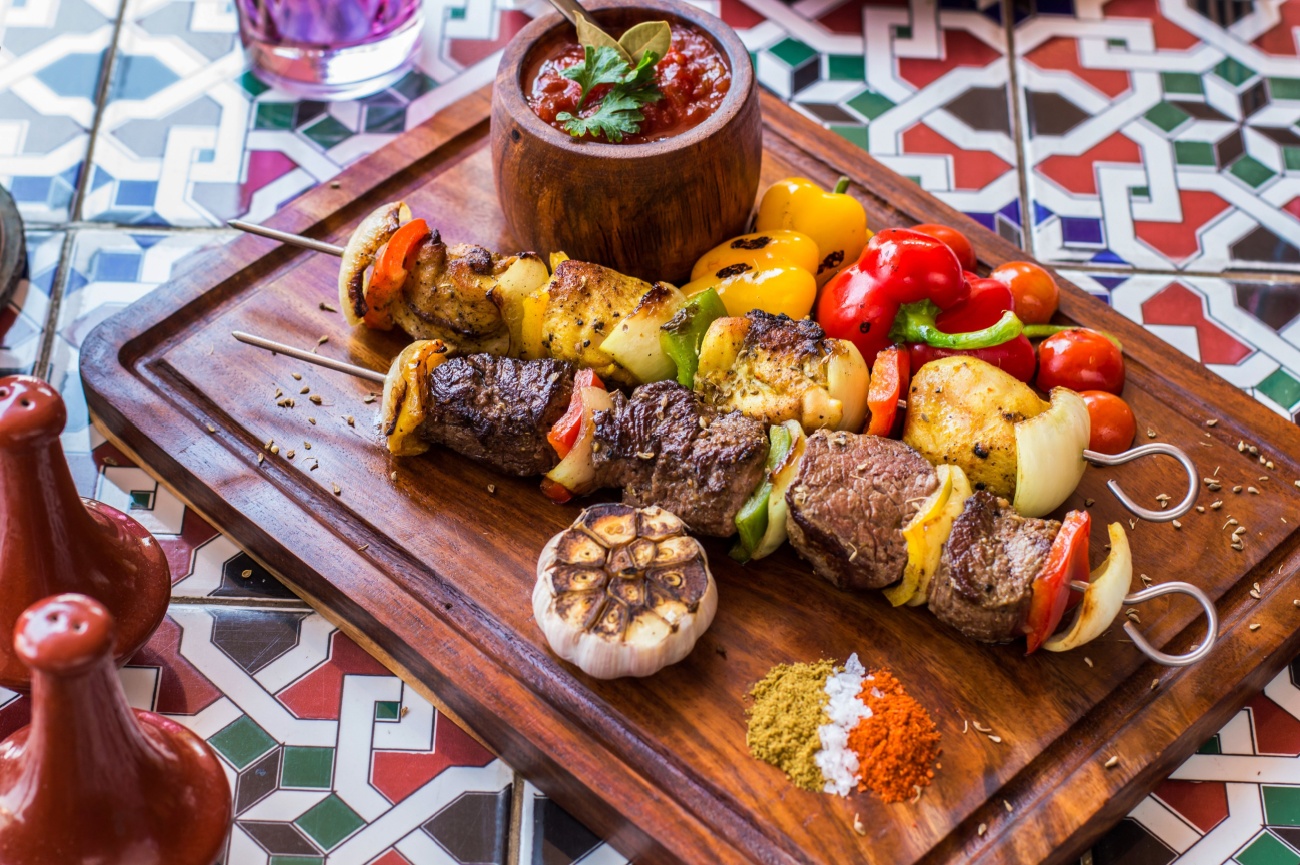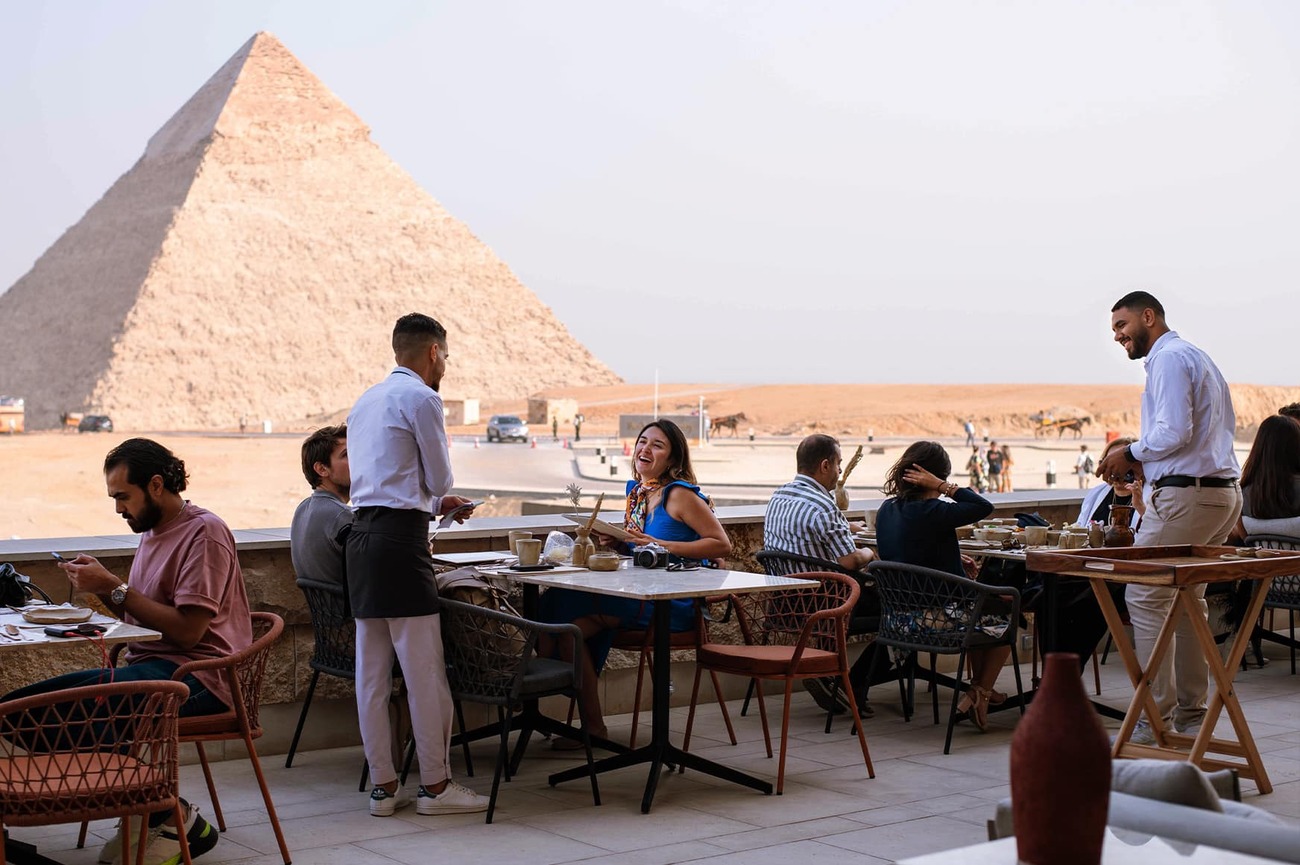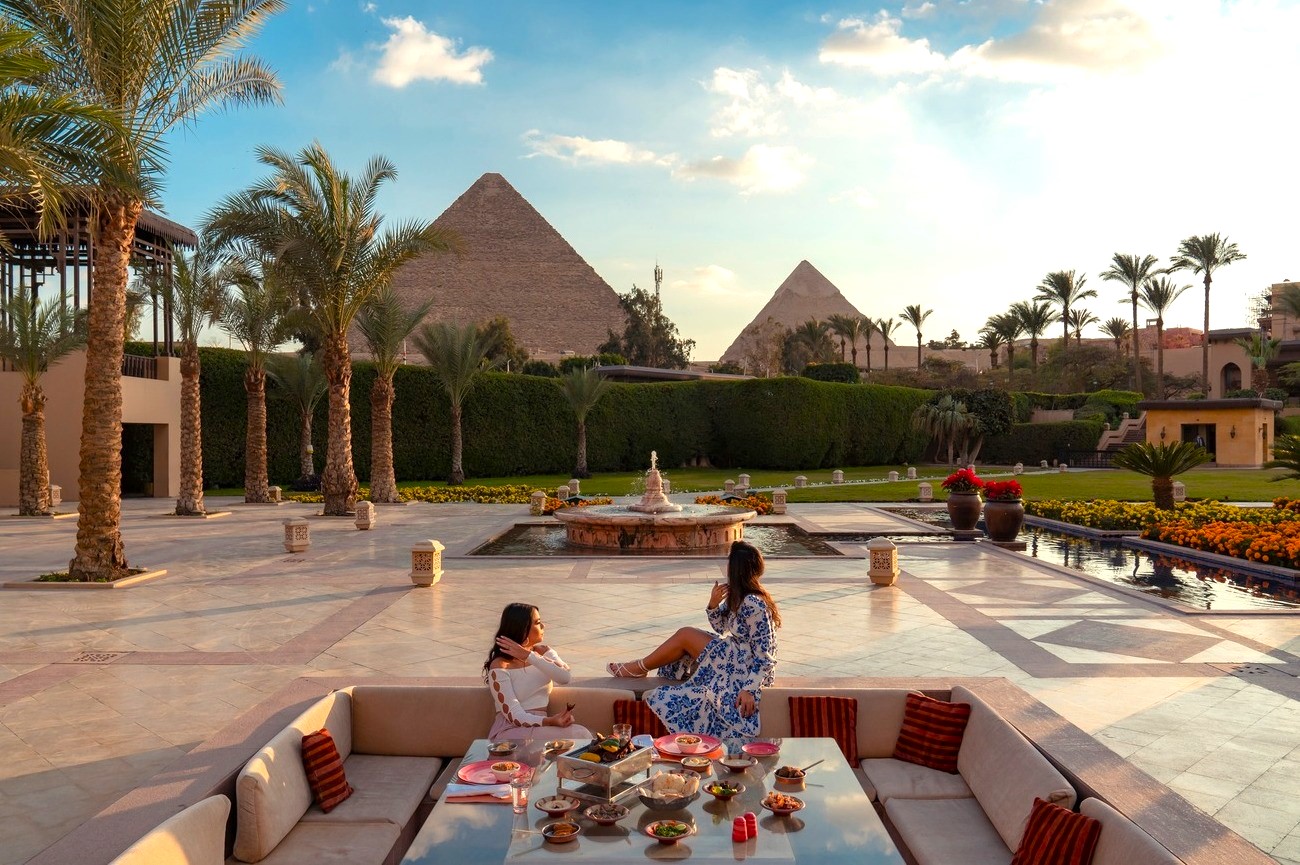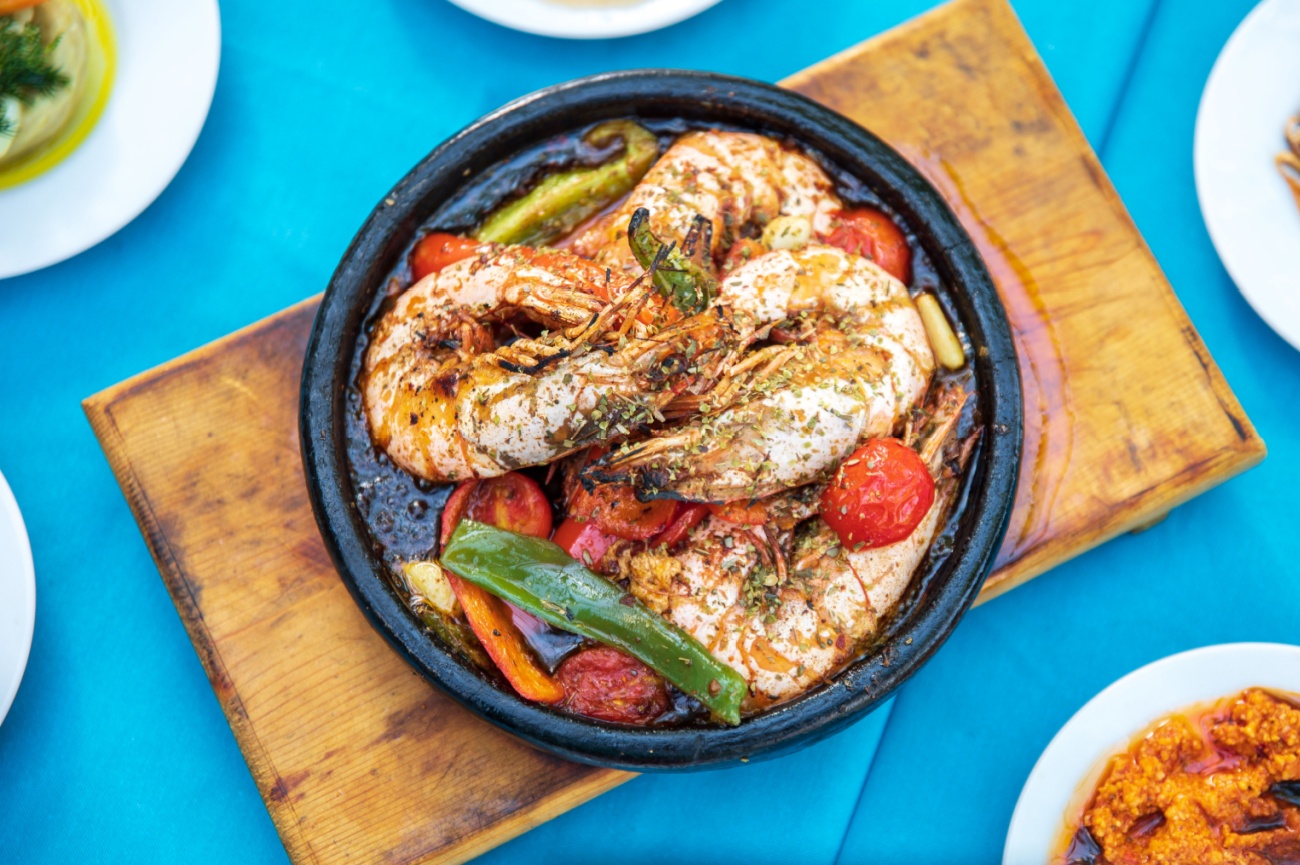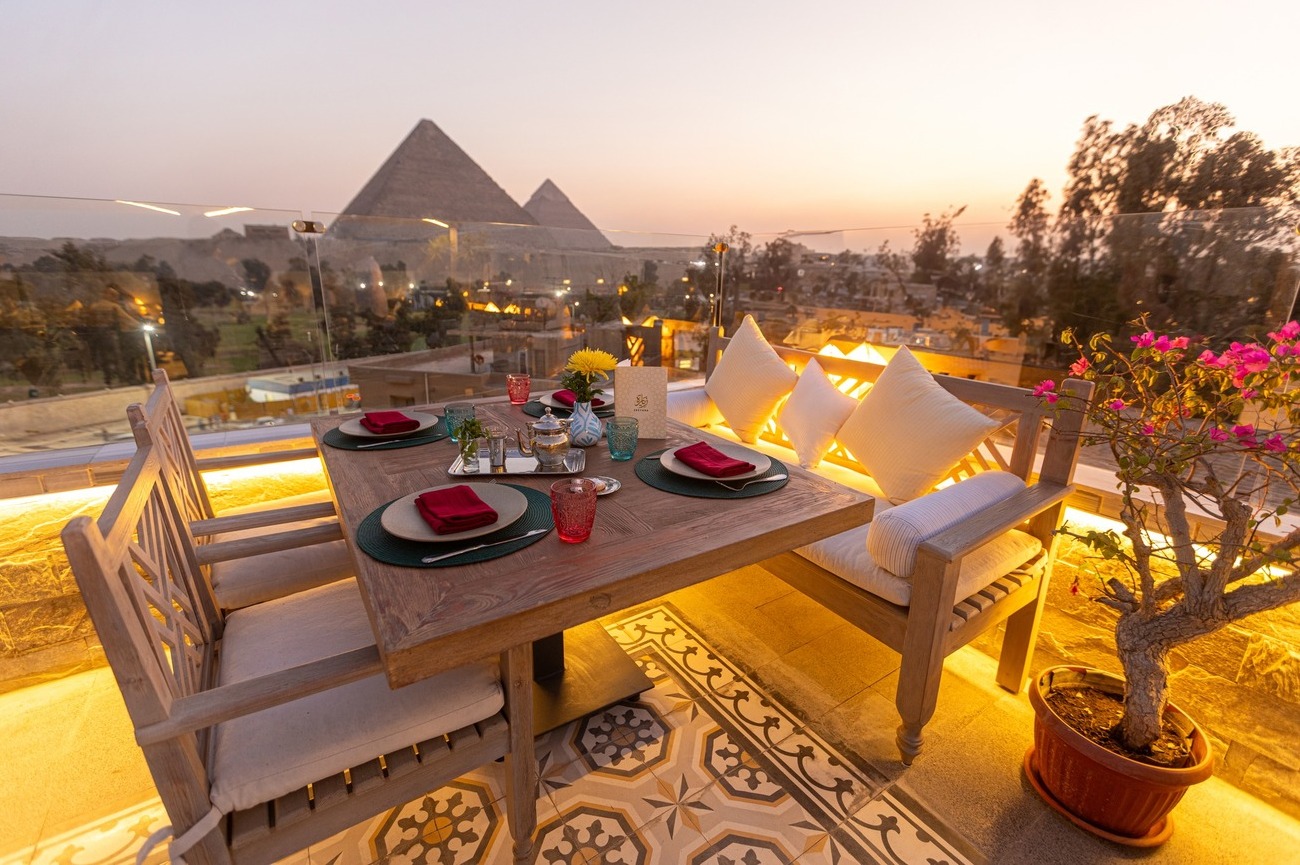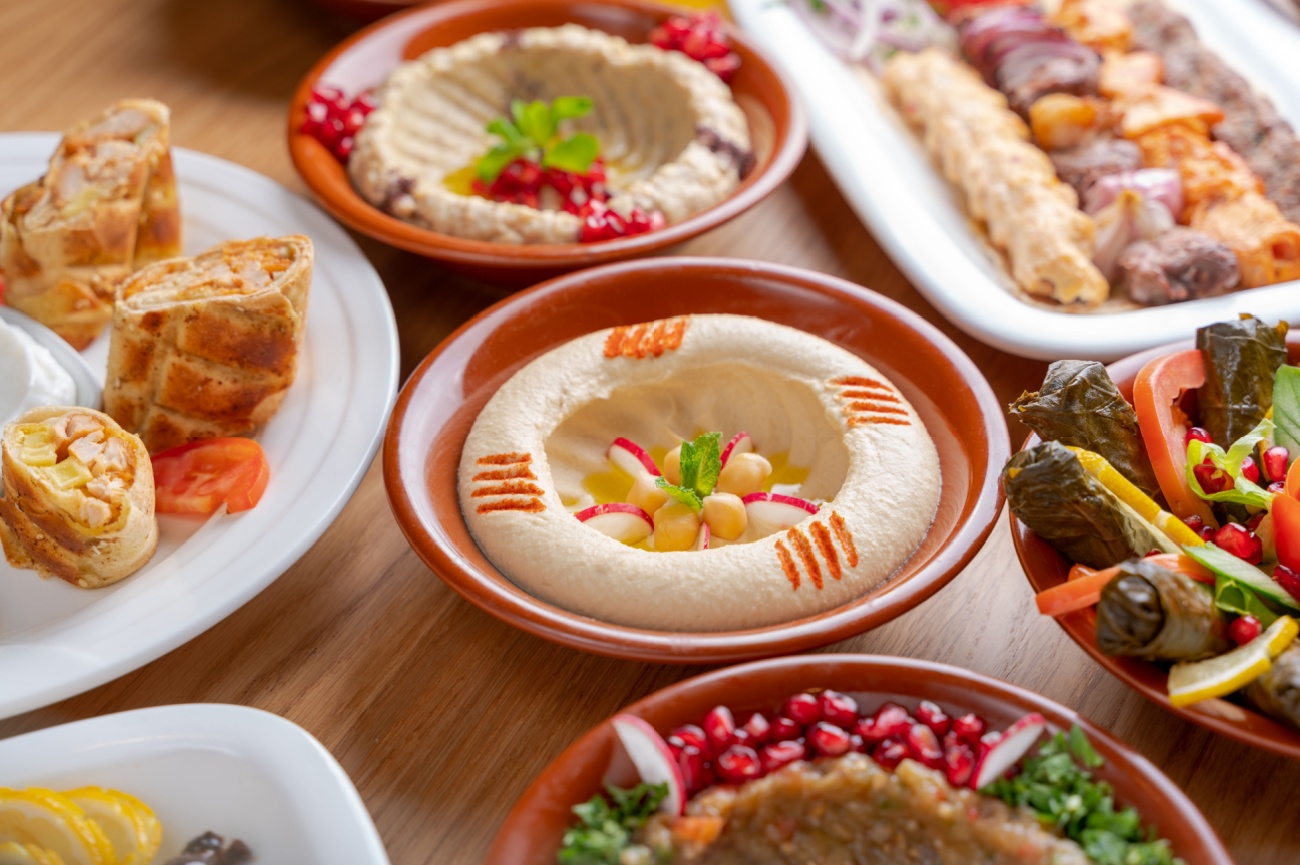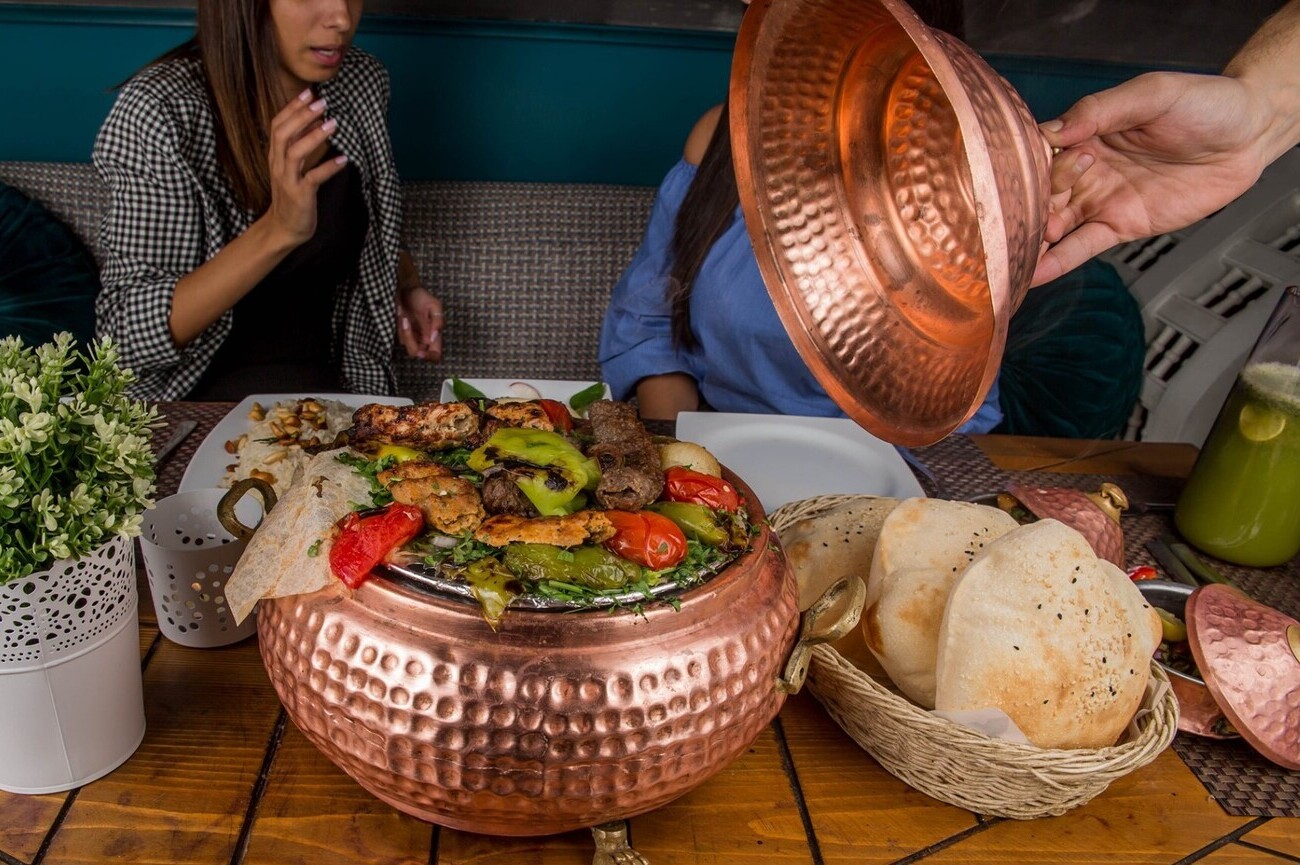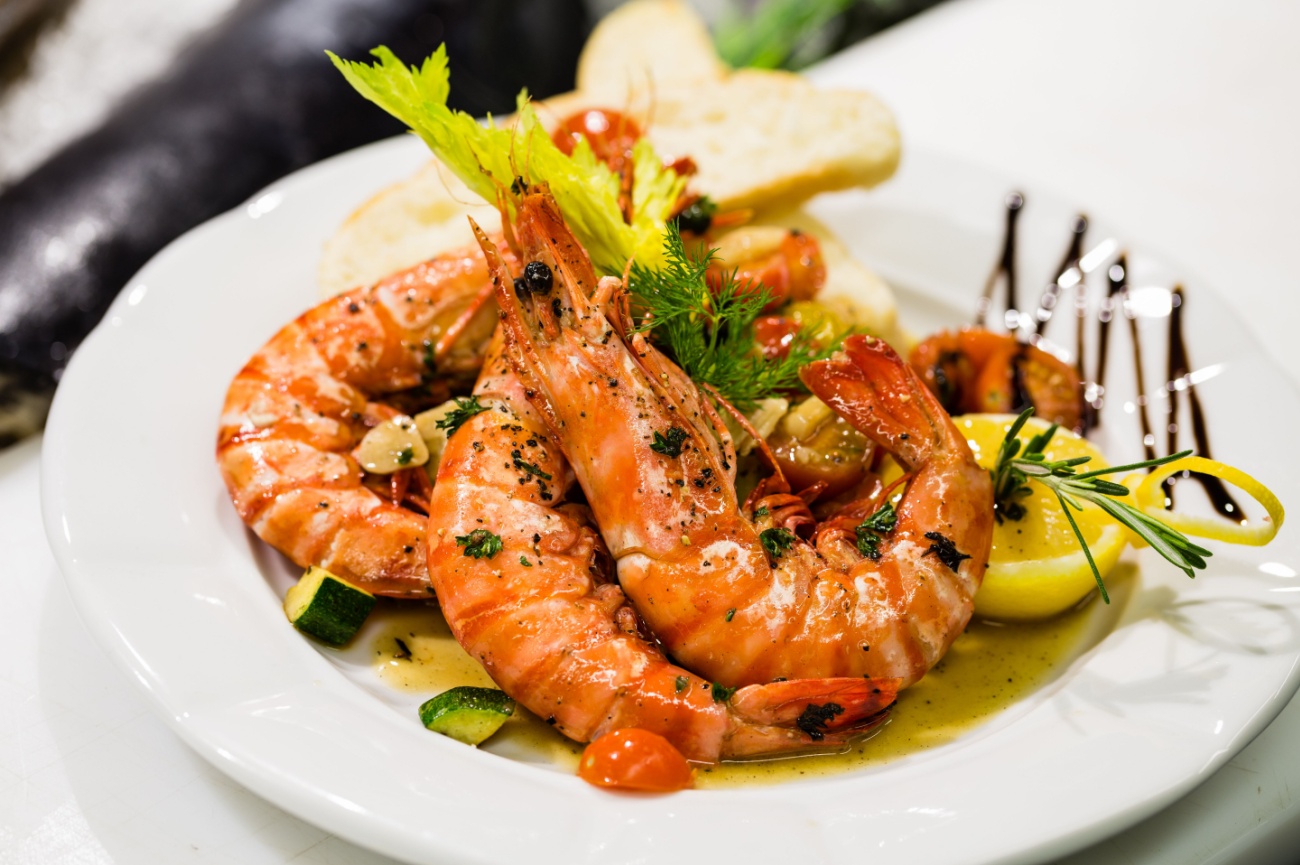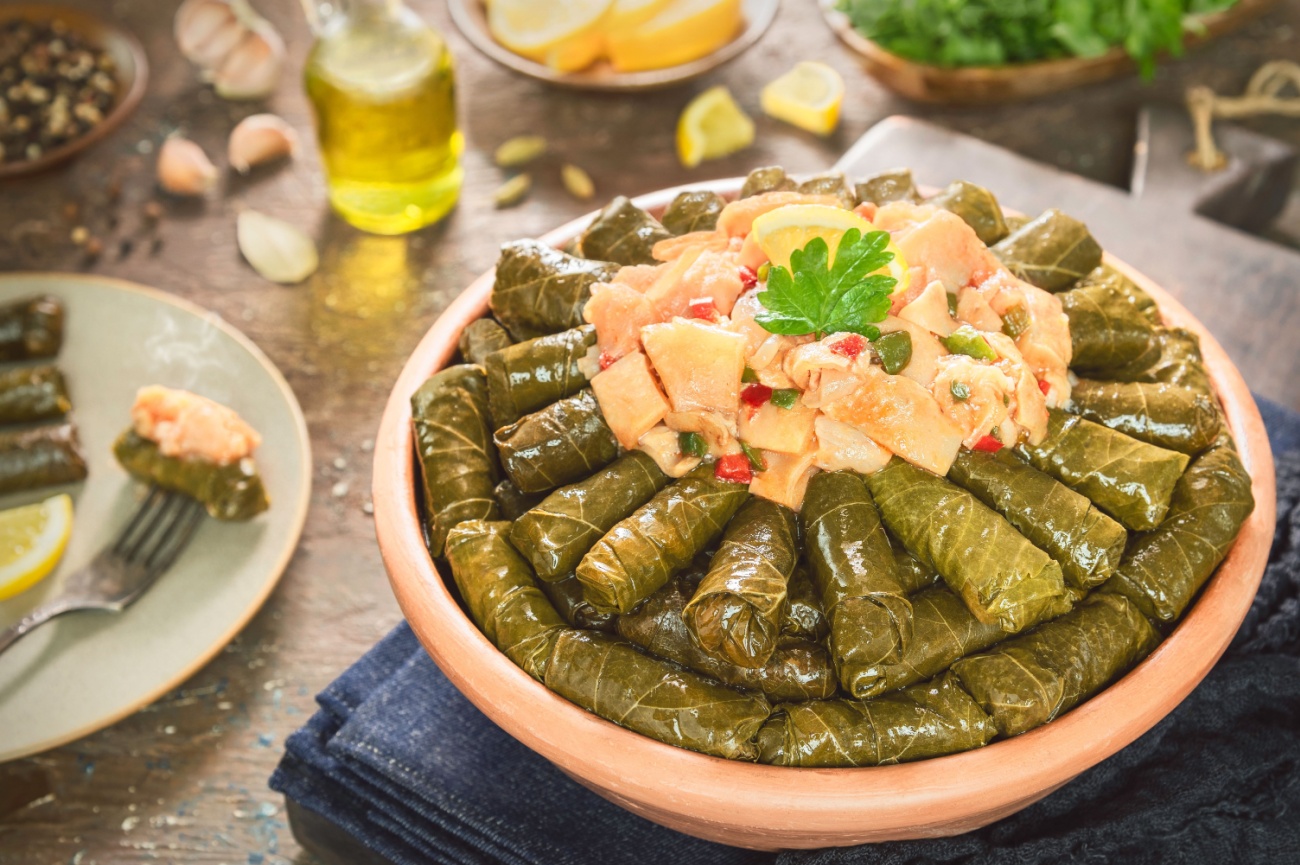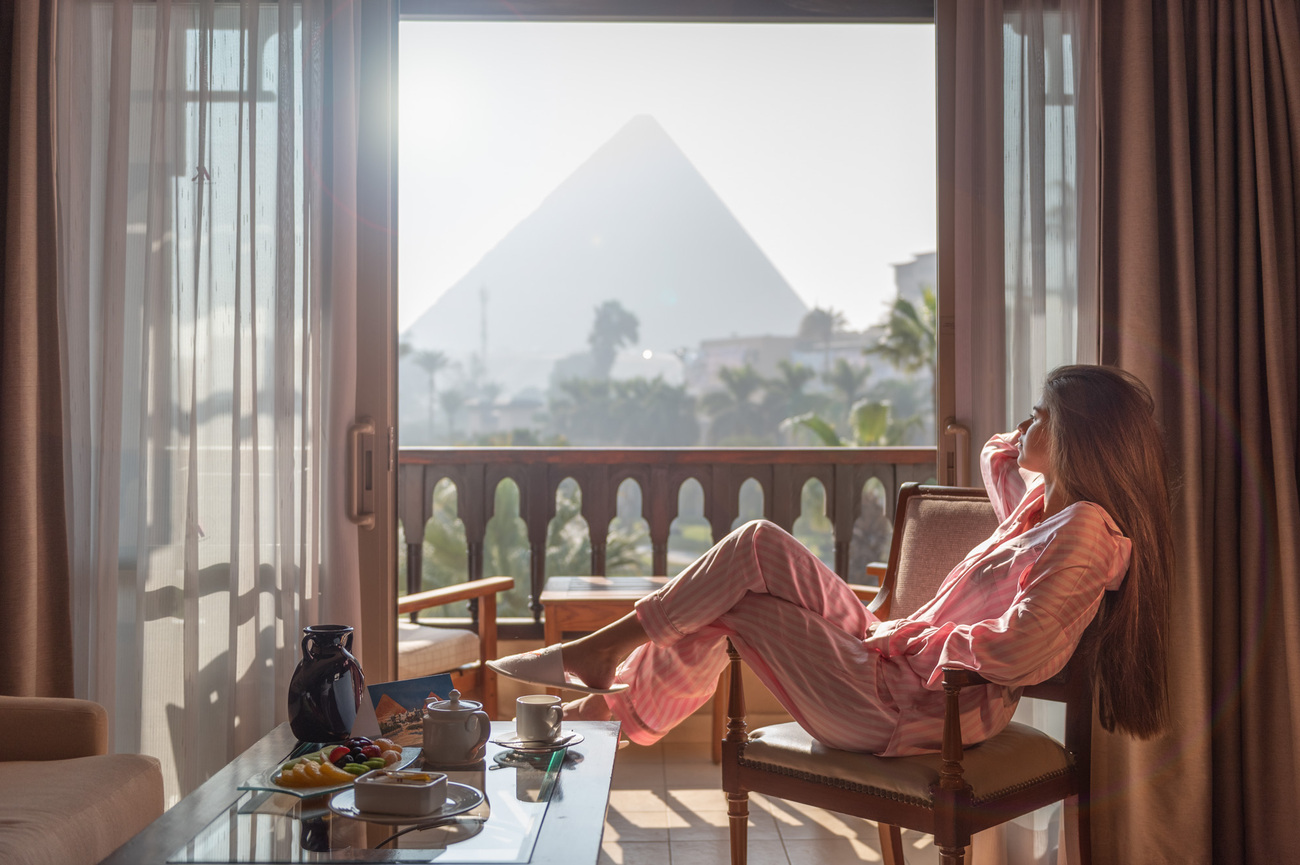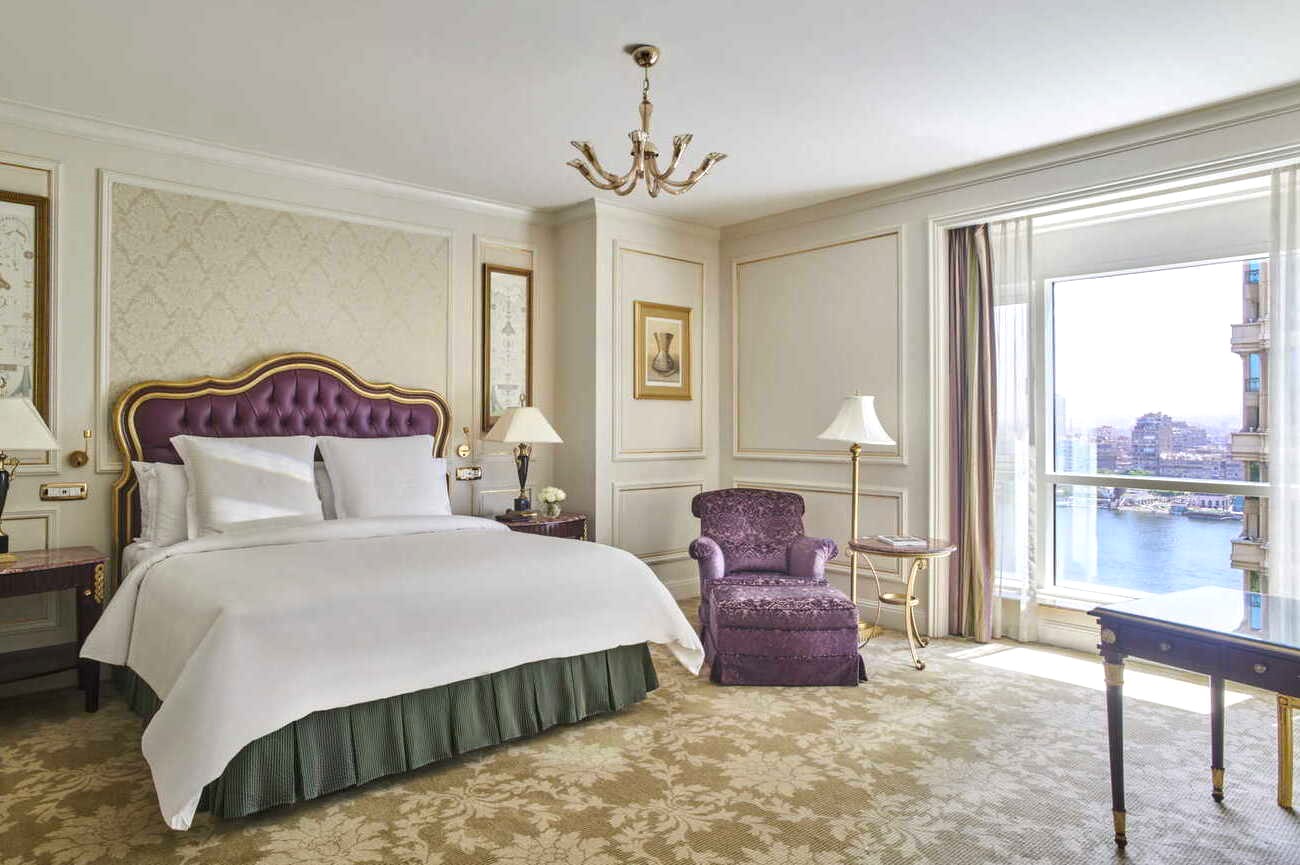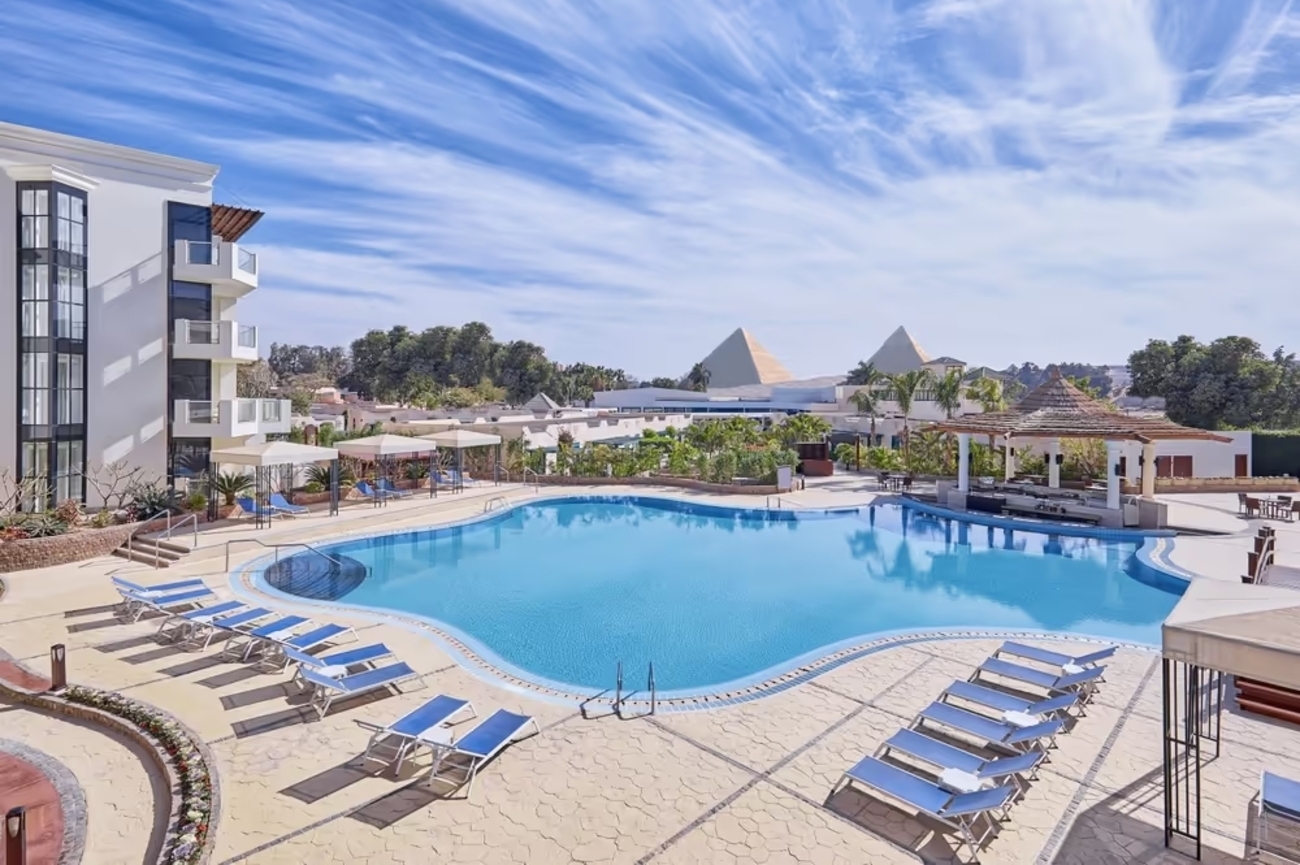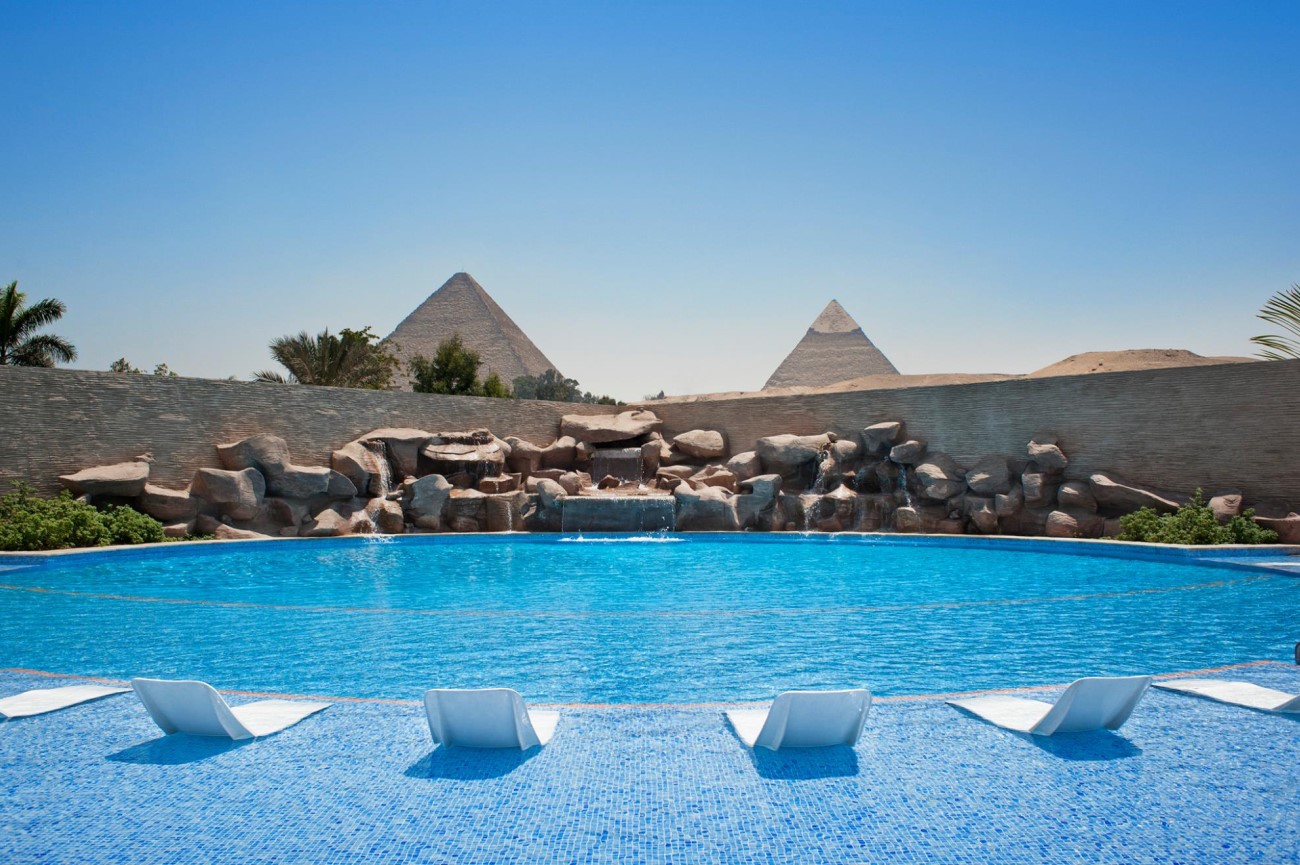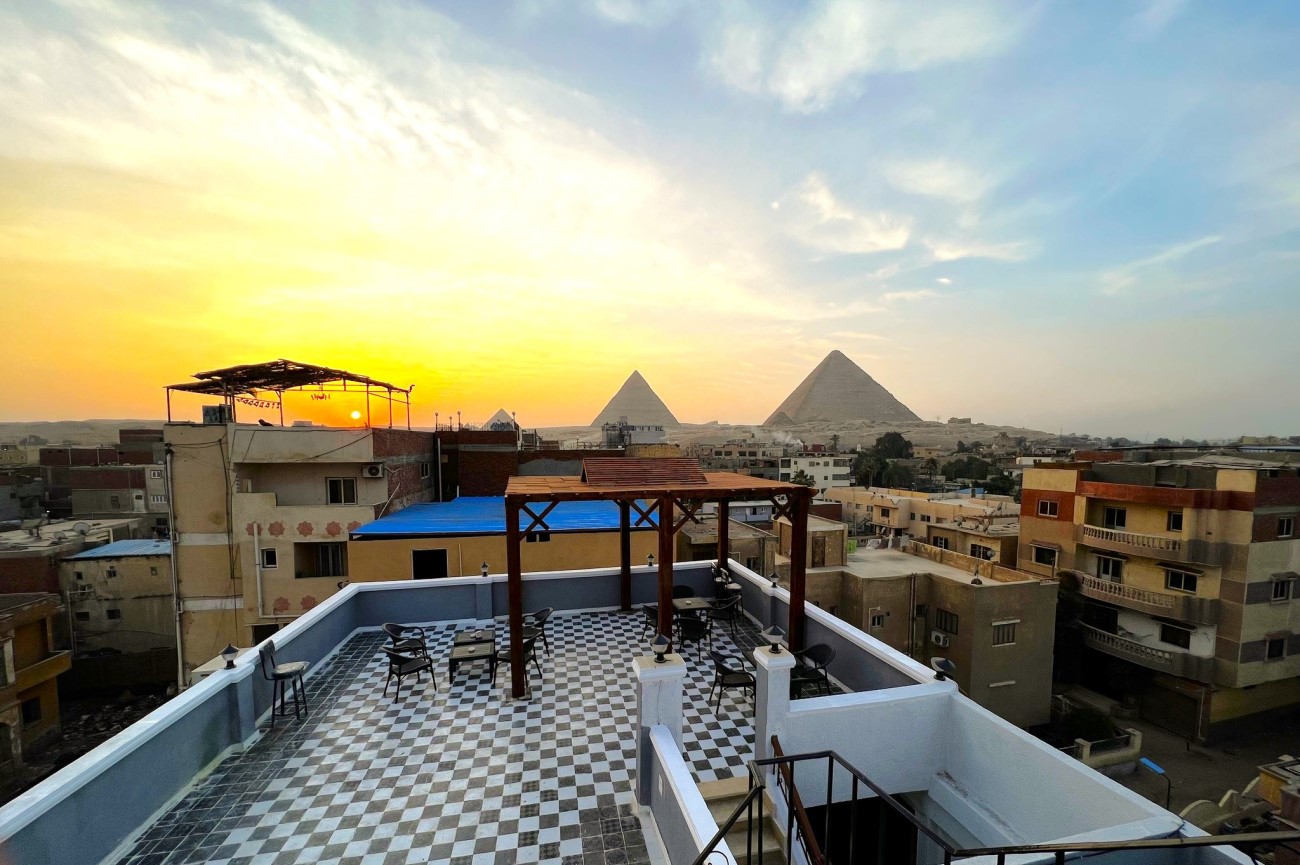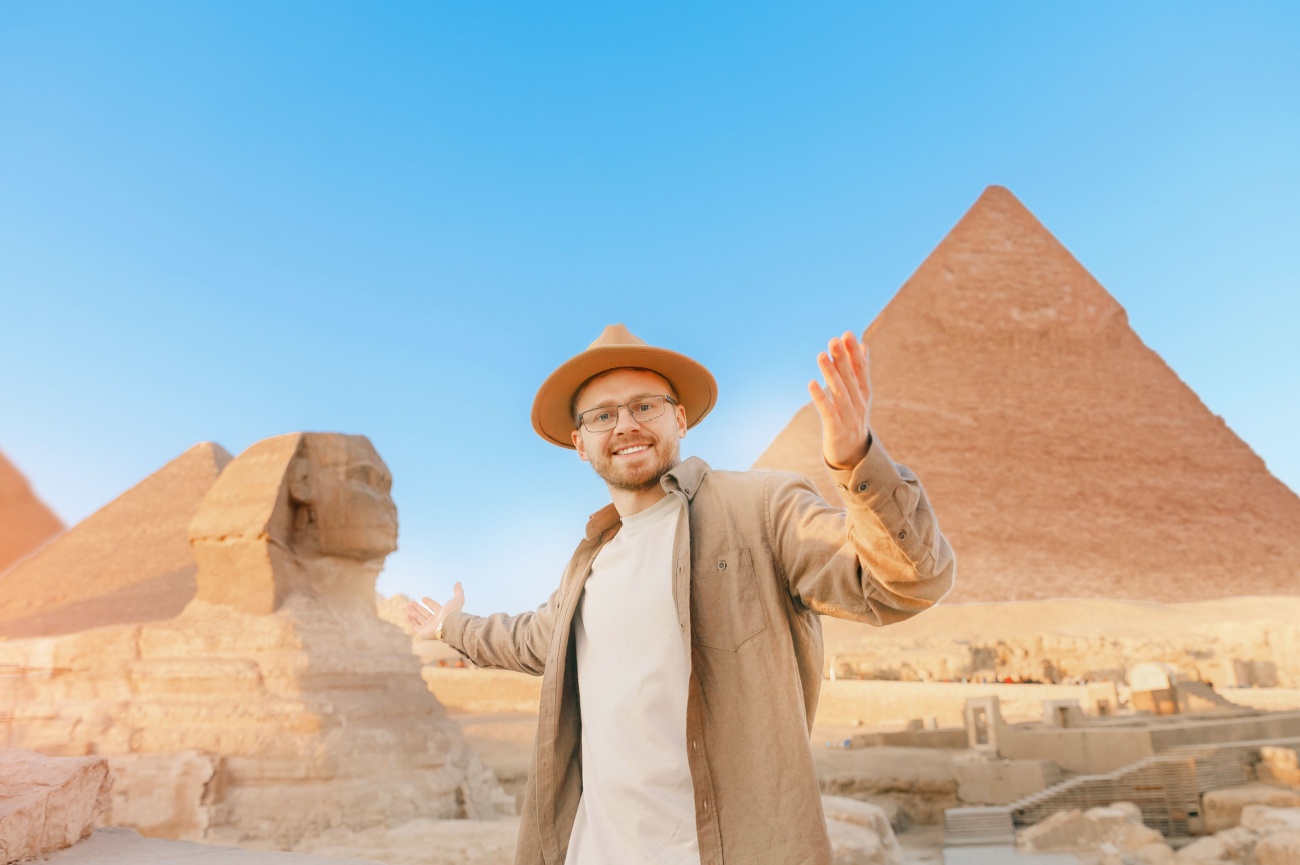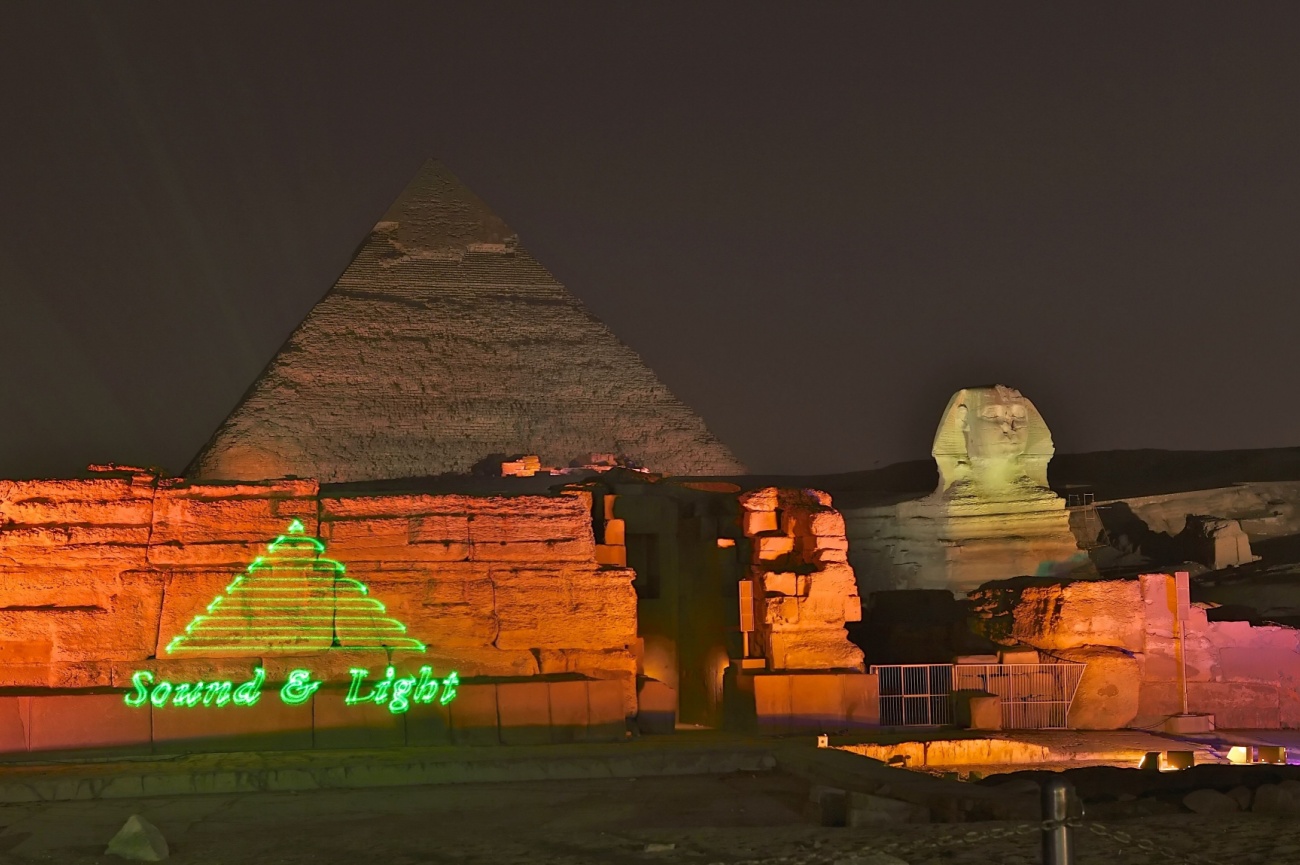Things to Do in Giza: 1-Day Itinerary
A governorate located on the west side of the Nile River in Egypt, Giza is mostly known for its awe-inspiring pyramids. These massive structures built for Egypt’s pharaohs and guarded by a 4,500-year-old limestone statue (the Great Sphinx) are one of the most fascinating architectural wonders in the world.
In addition to the pyramids, the city of Giza is home to many amazing tourist attractions such as the Agricultural Museum, the Pharaonic Village, and the Orman Garden. You will also find a few lovely museums in Giza worth checking out, as well as numerous local handicraft shops and stalls. The vibrant city of Cairo is just a short drive away.
To help you plan your trip, we’ve put together this 1-day travel itinerary which includes a list of the best things to do in Giza. You will also find many recommendations on places to eat and where to sleep, as well as a few suggestions for day trips from Giza.
Day 1

Morning: The Giza Plateau
You will spend the first part of the day at the site of the pyramid complex, the Giza Plateau. This famous archaeological site is home to ancient structures such as the Khufu’s Pyramid (the Great Pyramid of Giza), the Pyramid of Khafre, the Pyramid of Menkaure, the Great Sphinx, and a few other pyramids, tombs, and temples.
The general entrance ticket can be bought at the main ticket booth in front of the Giza Plateau. With your general entrance ticket, you’ll be able to drive/walk around and see these massive structures. If you wish to go inside one of the pyramids, you will need to decide which pyramid/pyramids you want to explore before entering the Giza Plateau complex, as the tickets to go inside the pyramids cost extra and can only be purchased at the main ticket booth.
Great Sphinx of Giza
Your first stop is one of the world’s most monumental statues, the legendary Great Sphinx of Giza. 73 meters long and 20 meters high, the massive statue with the head of a human and the body of a lion is incredibly impressive. Just standing in front of this majestic limestone statue feels surreal. Keep in mind that the Great Sphinx of Giza gets super busy and crowded at times, so you may have to be patient to snap some good photos.
The Great Pyramid of Giza (Khufu’s Pyramid)
You are in front of one of the Seven Wonders of the Ancient World, the Great Pyramid of Giza. Also known as the Khufu’s Pyramid, it is the most popular structure within the Giza Plateau. Khufu’s Pyramid is made of granite and limestone and is about 4,500 years ago. They allow visitors to go inside the pyramid with an additional ticket. If you are not claustrophobic and don’t mind the heat, enter the pyramid and visit attractions such as the Grand Gallery, the King's Chamber, and the Queen’s Chamber. The space inside the pyramid is very tight, narrow, and steep, but the experience of climbing through the ancient structure is unforgettable.
Pyramid of Khafre
Your next stop is the second-largest pyramid on the Giza Plateau. Built for the son of Khufu, the Pyramid of Khafre was built around 2520 B.C.E. and is better preserved than other pyramids in Giza. You can admire the beauty of this majestic structure from the outside or go inside for an extra fee. If you opt to step inside the Pyramid of Khafre, you will have an opportunity to see one burial chamber with a large sarcophagus. There are also vessels in which Khafre’s internal organs were kept. The space inside the pyramid is pretty small and tight. The good news is you’ll probably have a better chance of getting a decent photo, as this pyramid is less popular and draws fewer tourists than the Great Pyramid of Giza.
Pyramid of Menkaure
The third of the major pyramids within the Giza Plateau is the Pyramid of Menkaure. What we like most about this charming structure is that receives less traffic, as it is the furthest away from the entrance. 65 meters high, it is the smallest structure of the major three pyramids. There is not much to see inside, except an empty room. There used to be a tomb here, but the basalt sarcophagus got lost at sea when Colonel Vyse tried to take it to England. Fortunately, the lid of a coffin and some human bones were transferred to the British Museum.
Panoramic View of the Pyramids
There are a few viewpoints from which you can enjoy amazing views of the 3 main pyramids and take some nice photos, but the Panoramic View of the Pyramids is definitely the best one. This pyramid lookout is too far to walk to, so we recommend getting a car or riding a camel or horse-drawn carriage to reach it. At the site, you will find lots of vendors selling everything from souvenirs to head coverings.
Day 1, morning - Giza Tour Map
Afternoon:
The Agricultural Museum
In the afternoon, explore Giza's city center and its tourist attractions. You can reach these sites on foot or by car. Our first stop is the Agricultural Museum, a place dedicated to farming practices which provides an overview of the country’s agricultural history. If you love gardening, you will instantly fall in love with this museum. There are lots of interesting exhibits and displays here, from agricultural tools to a collection of rare plants. The best time to visit the Agricultural Museum is during the spring festival which takes place in the gardens of the museum. You will have an opportunity to see lots of stalls selling plants, pots, and flowers.
Orman Garden
Surrounded by beautiful plants and nature, the Orman Garden is a lovely botanical garden that houses a variety of plants and trees. Covering nearly 30 acres of land, the small park has a few interesting areas worth visiting, a rose garden, a cactus garden, and a lotus pond. There are also cool water fountains, picturesque paths, and bridges, as well as a children’s playground with rides, swings, and slides.
Pharaonic Village
There is no better place in Giza to learn about Egyptian civilization and the Pharaonic era than the Pharaonic Village. To hear stories about pharaonic life and the village itself, hop on the ferry ride. These boat tours include detailed explanations in English/Arabic language. After the boat ride, visit the village to see the replica of the Tomb of Tutankhamun and the Hellenistic Museum. Visitors should not miss the lovely photo studio where they can dress up in pharaonic costumes and get their picture taken. On your way out, stop by the gift shops where you will find antiques, souvenirs, and paintings on papyrus.
Ramses Wissa Wassef Art Centre
Your last stop in Giza is a fabulous art centre for handmade textiles and tapestry. Surrounded by colorful gardens, the Ramses Wissa Wassef Art Centre consists of a museum with terracotta structures and a gallery where you can see weavings. Upon arrival, you will be greeted by the founder’s daughter who runs the place nowadays. She will take you to Weaver’s studios and workshops to see tapestries and textiles. You can even purchase these exquisite artworks at the Ramses Wissa Wassef Art Centre. It takes about an hour to visit this art centre in Giza.
Day 1, afternoon - giza Tour Map
Other Things to See in Giza
- Grand Egyptian Museum (GEM): This museum with artifacts of Ancient Egypt in Giza is still under construction and most of its halls are closed to the public. However, the Grand Egyptian Museum (GEM) is offering limited tours to test the site. Access is limited to areas such as the Grand Staircase, Grand Hall, cafes, and the gardens. You will get a set of earplugs and the tour guide will tell you everything there is to know about the history of the statues and other exhibits. The Grand Egyptian Museum (GEM) is definitely going to be a spectacular place when it’s finished.
- Taha Hussein Museum: Visit a museum dedicated to Taha Hussein, an Egyptian writer, cultural critic, journalist, university professor, and the minister of education. Although Hussein lost his eyesight at an early age, this didn’t stop him from becoming one of the most influential Egyptian figures in modern history. The museum is situated inside a beautiful two-story villa where Hussein spent most of his life. After his death, the authorities decided to turn this lavish villa into a museum that houses a collection of Hussein’s personal belongings ranging from books and manuscripts to photographs. The tour also includes a visit to the grand reception hall where you will see a beautiful gramophone and a grand piano. Inside one of the bedrooms, there are dozens of paintings by popular artists like Youssef Kamel and Zeinab Abdel Aziz.
- Pharaonic Papyrus Museum: Wish to know how papyrus is made? Visit the Pharaonic Papyrus Museum, home to the largest collection of papyrus art and documents in the world. For those who don’t know, the papyrus plant is an aquatic plant native to the region. It was really important to the ancient Egyptians who used it as a writing surface. Inside the museum, you will find papyrus reproductions of famous paintings, early hieroglyphic writings, Egyptian documents written in hieroglyphs, and a wonderful collection of papyrus plants. You can also buy papyrus here and learn how to tell the difference between fake and real papyrus.
- Topaz Bazaar: This marketplace is probably the best place in the city to purchase Egyptian arts and crafts, from teas and herbs to clothes and jewelry. Located just a short walk from the pyramids, the Topaz Bazaar is also packed with food vendors that sell snacks and drinks.
- Quad Bike ATV Tours: If you are visiting the pyramids in summer, you should know that it can get overwhelmingly hot here. Therefore, we recommend booking one of the many quad-bike ATV tours and exploring the pyramids from a different perspective. By joining one of these tours, you will have a chance to see attractions like the Sphinx, the Pyramids of Khafre and Menkaure, and the iconic Great Pyramids of Giza in just an hour or two.
- Solar Boat Museum: Once home to the magnificent reconstructed Khufu solar boat, the Solar Boat Museum was originally located beside the Great Pyramid of Giza. The ancient wooden vessel, believed to have been built for Pharaoh Khufu’s afterlife journey, was discovered in 1954 in a sealed pit near the pyramid. The museum showcased the intricate reassembly of the boat, offering a glimpse into ancient Egyptian craftsmanship. As part of the Grand Egyptian Museum (GEM) project, the Solar Boat is now being relocated to the new museum for better preservation and display.
- Western Cemetery of Giza: Nestled close to the pyramids, the Western Cemetery of Giza is the final resting place of high-ranking officials, priests, and royal family members from the Old Kingdom. This vast necropolis contains mastabas—rectangular, flat-roofed tombs adorned with well-preserved hieroglyphic inscriptions and intricate wall carvings depicting scenes of daily life. Notable tombs include those of Queen Meresankh III and the Vizier Ptahshepses, where visitors can marvel at elaborate murals and learn about the influential figures who once served Egypt’s rulers. A walk through this lesser-known burial ground provides a deeper understanding of the elite society that thrived alongside the pharaohs.
- Abusir Pyramid Complex: Located just south of the Giza Plateau, the Abusir Pyramid Complex is a fascinating yet lesser-visited site containing the remains of 5th Dynasty pyramids. Unlike the grand pyramids of Giza, these structures—belonging to pharaohs such as Sahure, Neferirkare, and Nyuserre—are in a more ruinous state due to their use of lower-quality limestone. However, the site remains significant for its elaborate mortuary temples and sun temples, which highlight the growing religious emphasis on the sun god Ra during this period. Visitors can explore the causeways, offering chapels, and large courtyards that once played a role in royal burial rituals.
Day Trips from Giza
- Memphis: Located at the entrance to the Nile River Valley, this ancient city used to be the capital of Egypt in the Old Kingdom. Although its glory days have passed, Memphis is definitely worth visiting for its impressive archaeological ruins. You will come across a small museum with a sphinx, a colossus of Ramses, and a few beautifully carved stones. Memphis is located just a 20-minute drive from Giza, making it one of the easiest day trips.
- Saqqara: Located close to Memphis, Saqqara is an archaeological site that houses some of the oldest pyramids in Egypt. Visit the Pyramid of Djoser, the most famous archeological remains in the Saqqara Necropolis known for its unique shape. Some of the other attractions here include the Pyramid of Teti, the Pyramid of Unas, and the ruins of the Monastery of St Jeremiah. To see the oldest complete royal mummy ever and intricately carved wooden and stone statues, stop by the Imhotep Museum. It takes about 45 minutes by car to drive from Giza to Saqqara.
- Alexandria: If you are a fan of vibrant coastal cities, go on a day trip from Giza to Alexandria. The country’s second-largest city, the “Bride of the Mediterranean" is packed with archaeological sites, fabulous museums, and elegant restaurants and cafes overlooking the sea. History buffs interested in ruins can check out the remains of the Pillar of Pompeii and the Temple of Serapeu, as well as the Catacombs of Kom el Shoqafa. To see artifacts from the Pharaonic, Roman, and Islamic periods, spend an hour or two at the Alexandria National Museum. Travelers can also explore Bibliotheca Alexandrina, an architectural wonder that houses millions of books. The drive from Giza to Alexandria is long (2 hours and 30 minutes), so it’s best to leave early in the morning.
- Dahshur Necropolis (Bent & Red Pyramids): An essential visit for pyramid enthusiasts, the Dahshur Necropolis is home to two of Egypt’s most significant pyramids—the Bent Pyramid and the Red Pyramid, both built during the reign of Pharaoh Sneferu. The Bent Pyramid is unique due to its sudden change in angle halfway up, a design adjustment believed to prevent collapse. Meanwhile, the Red Pyramid, Egypt’s first successful smooth-sided pyramid, offers visitors the opportunity to enter its interior and explore its ancient chambers. Dahshur provides a quieter and more atmospheric experience compared to the bustling Giza Plateau. Just a 40-minute drive from Giza.
- Mit Rahina Museum (Memphis) (Colossal Ramses II Statue): Once the grand capital of Egypt during the Old Kingdom, Memphis is now an archaeological site featuring remarkable relics, including the colossal limestone statue of Ramses II. Housed within the Mit Rahina Museum, this towering figure measures over 10 meters in length, showcasing the grandeur of Egypt’s most celebrated pharaoh. Other artifacts on display include sphinx statues, sarcophagi, and beautifully carved hieroglyphic reliefs. A visit to Memphis offers an insight into Egypt’s earliest civilization and its profound influence on later dynasties. Located just 25 minutes from Giza.
- Pyramid of Lahun (Hawara): The Pyramid of Lahun, built for Pharaoh Senusret II, is famous for its labyrinth-like interior, which once housed an elaborate security system to deter tomb robbers. While the pyramid itself is largely ruined, the site is notable for its maze of passageways and hidden burial chambers, offering a glimpse into the evolution of pyramid construction techniques during the Middle Kingdom. Nearby, the remains of an ancient workers' village provide further insight into the daily lives of those who built Egypt’s monumental structures. Located approximately 2 hours from Giza.
- Wadi El Rayan (Faiyum): A striking contrast to Egypt’s arid desert, Wadi El Rayan is a picturesque nature reserve featuring Egypt’s only waterfalls, crystal-clear lakes, and rolling sand dunes. This tranquil oasis is a haven for birdwatchers and nature lovers, home to rare species such as the slender-horned gazelle and sand fox. Visitors can enjoy boat rides, sandboarding, and swimming in the refreshing waters, making it a fantastic escape from the city’s heat. The site’s dramatic landscapes provide a perfect setting for photography and relaxation. Located about 2.5 hours from Giza.
- Monastery of St. Macarius (Wadi El Natrun): Founded in 360 AD, the Monastery of St. Macarius is one of the oldest Coptic Christian monasteries in Egypt, serving as an active religious center for monks for over 1,600 years. The monastery houses ancient manuscripts, beautifully decorated churches, and the relics of St. Macarius, making it an important pilgrimage site for Coptic Christians. Visitors can explore the iconic domed architecture, interact with resident monks, and learn about the monastic traditions that have been preserved for centuries. The tranquil atmosphere of Wadi El Natrun offers a spiritual retreat away from the bustling streets of Cairo and Giza. Situated 1.5 hours from Giza.
Best Golf Courses in Giza
- Dreamland Golf Resort: Located in the posh 6th of October district and just a stone’s throw away from Hilton and Swiss Inn 5-star resorts, the Dreamland Golf Resort is a fantastic 18-hole golf course designed by Irish architect David Jones. The greens and the palm-fringed fairways are well-maintained and there is a pro shop on-site. The Great Pyramids of Giza are just a 20-minute drive away.
- Newgiza Golf Club House: Welcome to one of the newest golf courses in Giza, the Newgiza Golf Club House. You will find a golf club, pro shop, and a restaurant here, as well as an outdoor swimming pool with sun decks. The 18-hole golf course itself has tight fairways and is quite challenging.
Things to Do with Kids in Giza
- Dream Park: A visit to this busy theme park is one of the best things to do with children in Giza. One of the largest outdoor theme parks in the country, the Dream Park is packed with a wide range of exciting games. There are roller coasters, car races, a Ferris wheel, video games, and many other attractions to look forward to. Visitors can also check out the mini zoo and see performances by professional acrobats and dancers.
- Dandy Mega Mall: Located just a short drive from downtown Giza, Dandy Mega Mall is one of the oldest shopping centers in the region. It is home to many shops where you can purchase gifts, antiques, perfumes, clothes, furniture, perfumes, shoes, and much more. Dandy Mega Mall is also a great place to take your kids to. On the top floor, you will find many entertainment facilities such as a cinema complex, two kids' play areas, a bowling alley, table tennis, and a snooker hall. In case your kids get hungry, there are dozens of on-site cafes and restaurants.
- Camel Riding Around the Pyramids: While you can explore the grand Pyramids in Giza on foot, there is also the option of booking a camel ride. You will find a large number of local vendors offering camel rides around the Giza Plateau throughout the day. We recommend going a camel safari either early in the morning or before sunset to avoid the desert heat. Just remember to wear comfortable clothes and pack some sunscreen.
- Wonder Land Amusement Park: For a fun-filled family day, visit Wonder Land Amusement Park, one of Cairo’s long-standing entertainment spots. Located in Nasr City, this amusement park features a variety of rides and attractions suitable for all ages. From classic carousel rides and bumper cars to adrenaline-pumping roller coasters and a haunted house, there’s plenty to keep kids entertained. The park also has arcade games, food stalls, and a small water park area to cool off on hot days. It’s a great place for families looking for a mix of thrill rides and casual fun in Cairo.
- Cairo Zoo: A favorite among families, Cairo Zoo is Egypt’s largest and oldest zoo, dating back to 1891. Spread over 80 acres in Giza, the zoo is home to a wide range of animals, including lions, giraffes, zebras, and rare species native to Africa. One of its most unique features is the historic Giza Zoological Museum, which displays taxidermied animals and fossils. Kids can also enjoy pony rides, feed some of the smaller animals, or explore the shaded gardens. While the zoo has undergone renovations in recent years, it remains a popular place for children to learn about wildlife and enjoy a day outdoors.
- KidZania Cairo: A miniature city designed for children, KidZania Cairo offers an interactive and educational experience where kids can role-play different professions, from doctors and firefighters to pilots and chefs. With realistic shops, banks, and hospitals, children learn about responsibility, teamwork, and financial literacy in a fun, hands-on way. The activities are tailored to various age groups, making it a great indoor attraction for families visiting Cairo. Located approximately 40 minutes from Giza.
- Magic Galaxy: One of Cairo’s largest indoor amusement parks, Magic Galaxy is an exciting entertainment hub featuring arcade games, mini roller coasters, bumper cars, and a 3D cinema. Located inside Cairo Festival City Mall, this family-friendly venue is perfect for younger children who enjoy indoor rides and interactive games. Parents can also take a break at the mall’s many cafes and restaurants while their kids enjoy the rides in a safe, climate-controlled environment. Located approximately 50 minutes from Giza.
- Africa Park: For an authentic safari experience, Africa Park is an open-air wildlife reserve where families can drive through and observe zebras, lions, giraffes, and monkeys up close. Visitors can choose between taking their own car or a guided safari vehicle, allowing children to see wild animals roaming freely in natural habitats. The park also has a petting zoo, where kids can interact with smaller animals like deer and rabbits. A perfect adventure for nature-loving families! Located about 1.5 hours from Giza.
- The Aquarium Grotto Garden: One of Cairo’s oldest attractions, The Aquarium Grotto Garden is a hidden gem featuring underground caves, fish tanks, and lush greenery. Once a popular gathering place for Cairo’s elite, this historical garden offers children the chance to explore winding tunnels and discover different species of fish and turtles. Though some of the aquarium tanks are no longer functional, the park remains a peaceful and charming spot to visit with kids. Located about 30 minutes from Giza.
- Ski Egypt: Egypt may be famous for its desert landscapes, but Ski Egypt brings a winter wonderland to the city. As the first indoor ski resort in Africa, Ski Egypt offers real snow, ski slopes, and snow play areas where kids can build snowmen and enjoy toboggan rides. One of the highlights is the penguin encounter, where families can meet and interact with live penguins in a specially designed habitat. Whether your child is learning to ski or just wants to play in the snow, this cool attraction provides a refreshing escape from the Egyptian heat. Located approximately 1 hour from Giza.
Where to Eat in Giza
- Restaurant El Dar Darak: Located just a 10-minute walk from the pyramids in Giza, this traditional restaurant has been around for more than 20 years. Restaurant El Dar Darak boasts traditional Egyptian décor and offers a variety of local dishes from kebabs and koshari to shawarma and ful medames. Meat lovers will want to order the delicious lamb chops, while vegetarians can try the stuffed eggplant. The signature soup with beans in a rich sauce is also tasty. Leave some space for dessert and order baklava or kunafeh.
- Khufu’s Restaurant: This elegant dining establishment is all about modern Egyptian cuisine and panoramic views of the pyramids from their beautiful outdoor terrace. Khufu’s is actually one of the only two eateries situated inside the Giza pyramid complex and you can see most of the pyramids from here. To try a bit of everything, we recommend ordering the Egyptian appetizer platter. The kofta is also good, as well as the grill platter and the lamb chops. Khufu’s Restaurant is very popular, so make sure to call and reserve a table at least a day in advance.
- 9 Pyramids Lounge: The other restaurant located right on the Giza Plateau, 9 Pyramids Lounge is also one of the more popular places to eat near the pyramids. Open from 8 am to 5 pm, the restaurant serves Egyptian food with favorites such as oriental sausages, boneless grilled chicken, grilled kofta, kebab, and stuffed vine leaves. One thing to remember is that although the restaurant is located within the Giza Pyramids Complex, it is not that close to the pyramids. You’ll need to have a car or catch a taxi to get here.
- 139 Pavilion: Part of the stylish Marriott Mena House hotel in Giza, this beautiful restaurant with high ceilings and elegant white curtains is probably the pretties dining establishment you will find in the area. With a gorgeous fountain, a swimming pool, and nice views of the Great Pyramid, the outdoor dining terrace also looks spectacular. At 139 Pavilion, you can go choose between a classic la carte menu and an all you can eat buffet. The menu is extensive with popular dishes such as egg falafel, shish kebab, and kofta.
- Cheristo Seafood Restaurant: Founded nearly 100 years ago, Cheristo is one of the oldest restaurants in Giza. It is located just across the road from the charming Marriott Mena House Hotel and offers magnificent views of the pyramids from the outdoor terrace. Cheristo is a place for Seafood lovers who can look forward to trying delicacies like fried calamari, boiled crabs, fried shrimp, and first-class oven-baked fish. If you cannot decide what to order, go for the grilled fish seafood combo.
- Zeeyara Pyramids Elite: For authentic Egyptian cuisine and some seriously awesome views of the pyramids , make a reservation at the Zeeyara Pyramids Elite in Giza. Located on the rooftop of the prestigious Elite Pyramids Boutique Hotel, the restaurant offers an extensive menu with plenty of homemade Egyptian dishes. If you are feeling adventurous, try their camel meatballs or rice with shredded pigeon. If you wish to stick to the classics, we recommend ordering the chicken mesahab or falafel. Leave space for dessert and get the zeeyara pie.
- Andrea El Mariouteya New Giza: If you get tired of the busy restaurants close to the pyramids and wish to have a quiet and relaxing dining experience, book a table at Andrea El Mariouteya. Nestled on a hill, this lovely restaurant is a 20-minute drive from the Giza Plateau. Surrounded by trees and a lovely garden, the outdoor terrace with wooden tables looks amazing. It is a place where life is unhurried and travelers come to enjoy nature. The restaurant bakes its own bread and specializes in grilled boneless chicken.
- Hayda Lebanese Restaurant: An elegant restaurant located in downtown Giza right next to the Nile River, Hayda is known for its adorable interior designs, delicious Lebanese dishes, and spectacular river views. On the menu, visitors will find dishes such as grilled chicken with chickpeas, mushroom soup, kofta, and lamb chops. There is also a nice outdoor deck and live music in the evenings. It’s a great place for a romantic date with that special someone.
- Asmak Restaurant: This seafood and fish restaurant is also located on the west bank of the Nile River. What we like most about Asmak is that you can choose your seafood/fish which is displayed on a huge pile of ice. You can also choose if you want your fish/seafood grilled or fried. The menu is extensive with options like sea bass, calamari, shrimp, mussels, and other seafood delicacies.
- Viola Rooftop & Restaurant: Boasting views of the Nile River, the Viola Rooftop & Restaurant is a great place to have lunch and dinner when staying close to Cairo. The restaurant is spacious and offers both indoor and outdoor dining areas. It is also a popular spot to watch sports on one of their giant TV screens. As for the menu, you will find many Egyptian dishes like stuffed vine leaves, kunafa, and chicken manakish with cheese.
Where to Stay in Giza
- Marriott Mena House: With its lush green gardens, a nice swimming pool, spa facilities, and breathtaking views of the pyramids, the Marriott Mena House is one of the best hotels in Giza. You will be staying close to the Giza Plateau and just a short drive from the famous tourist attractions in Cairo. The hotel offers a choice of tastefully decorated rooms and suites with private terraces. The hotel’s on-site restaurants are one of the best in Giza. A delicious breakfast is included in the price and served in the majestic gardens.
- Four Seasons Hotel Cairo at The First Residence: Nestled on the banks of the Nile River in Giza, this 5-star hotel is famous for its luxurious rooms and an enormous outdoor swimming pool. If you wish to stay within walking distance from the center of Cairo and a short drive from the pyramids in Giza, Four Seasons Hotel Cairo at The First Residence is probably your best option. The hotel has everything you can think of, from exceptional on-site restaurants to a world-class spa where guests can enjoy different therapies and treatments.
- Cairo Pyramids – Steigenberger: Another elegant 5-star hotel with panoramic views of the pyramids, Cairo Pyramids – Steigenberger has everything that travelers need for a comfortable stay. Guests have access to a rooftop swimming pool and can stay in one of the spacious rooms fitted with modern furniture and en-suite bathrooms. Some of the suites come with views of the pyramids.
- Le Meridien Pyramids Hotel & Spa: A 5-star hotel with a state-of-the-art spa center, landscaped gardens, a few posh dining establishments, a fitness center, and a large swimming pool with a bar, Le Meridien Pyramids Hotel & Spa is probably one of the most luxurious properties near the Pyramid complex in Giza. The hotel is huge with nearly 700 rooms and deluxe suites to choose from. The hotel’s spa with massage treatments, hot tubs, and a sauna is an ideal place to visit after a day of exploring the pyramids in the desert.
- Onyx Pyramids Boutique Hotel: Opened in July 2024, Onyx Pyramids Boutique Hotel is a brand new property located a 10-minute walk from the Giza pyramids. The hotel has boasts a photogenic outdoor swimming pool nestled in the middle of the picturesque courtyard. There is also a small indoor swimming pool. Rooms are cozy with air conditioning, en-suite bathrooms, and free Wi-Fi. Guests can enjoy breakfast, lunch, and dinner on the terrace of the new on-site restaurant. The terrace looks spectacular and offers breathtaking views of the Giza pyramids.
- Pyramids Gate Hotel: If you wish to stay close to the Giza Plateau, book a room at the Pyramids Gate Hotel. It takes just 10 minutes on foot to reach the pyramids from here. The hotel itself looks nice with a shaded garden, an on-site restaurant offering Egyptian and Italian cuisine, and a lovely terrace on the rooftop where you can enjoy views of the pyramids. At the front desk, you can arrange different tours from the pyramid excursions to tours of Cairo.
Best Time to Visit Giza
The summer season (June to September) is probably not the best time to visit the Giza Plateau and the Pyramids of Giza. During this time of year, it gets uncomfortably hot with temperatures reaching 39°C. Being out in the desert in this weather is definitely not a good idea. The best time to visit Giza is in winter from December to February when the weather is quite comfortable for exploring the pyramids. To avoid the winter crowds, visit Giza during the shoulder seasons (March, April) and (October, November). Keep in mind that the best time of the day to explore the pyramids and avoid the heat and large crowds of tourists is early in the morning.
Giza Festivals
- The Pyramids Evening Light and Sound Show: Don’t miss this beautiful light and sound show of the pyramids when visiting Giza. Seeing these ancient structures covered in colors at night is an unforgettable experience. The event also includes interesting historical audio content (available in 10 different languages) coming from the speakers. This daily performance begins at 18:30 in winter and 19:30 in summer and costs around 18 euros per person.
